


In Italian
Itinerary in the Piceno: an experiential journey in the most genuine and authentic Marche. A journey through history, culture, traditions, legends, nature and food and wine. From Colli del Tronto to Castigliano, from Offida to Ripatransone, from Ascoli Piceno to Monsanpaolo del Tronto, following the origins, history and production of the excellence of the territory. Information and tips to better organize tours and tastings.
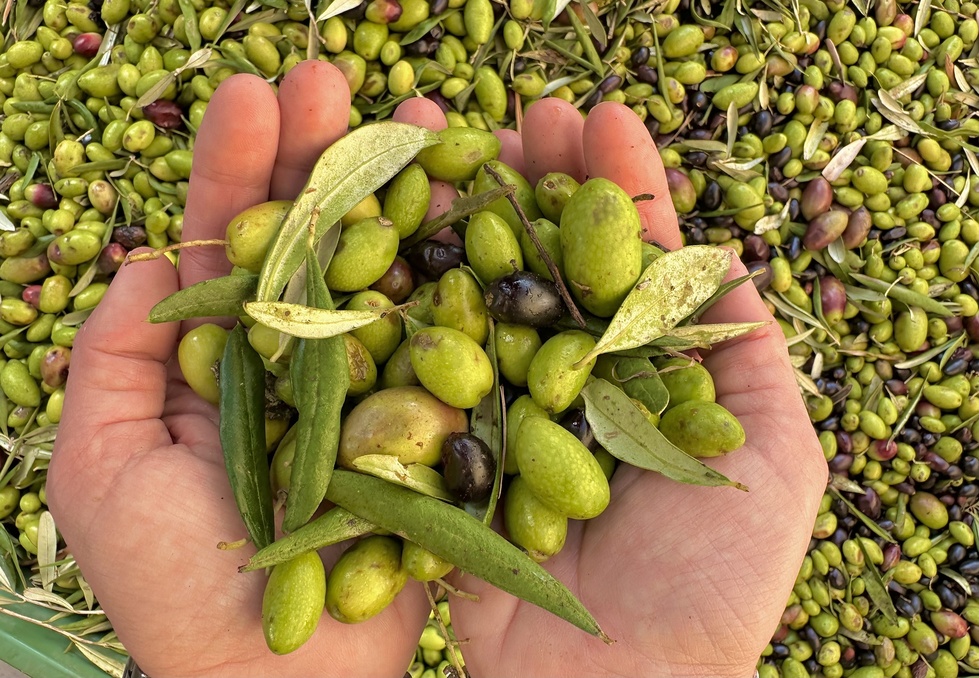
Itinerary in the Piceno: a journey in Le Marche through history, culture, food and wine
A long weekend in late autumn in Le Marche.
The perfect opportunity to continue the discovery and narration of one of the regions of Italy that I love most and that I visit more and more often.
So, as happened last year for the Terre del Tartufo – always in collaboration with Copagri Marche – I came back to explore the historical, cultural and gastronomic treasures of the Piceno.
An experiential path that develops within 30 km, from small and charming villages perched on their precious historical theaters, passing through the stories and places of composers, writers, artists, painters, weavers, saints and mummies, following the traces of the Knights Templar among hermitages and mystical paths. All this tasting the excellence of this generous territory, the result of the passionate work of local farmers and producers, from olive groves to vineyards.
Find down here the complete itinerary, to be developed in at least three full days, with detailed information and useful tips to better organize experiences, paths and tastings.
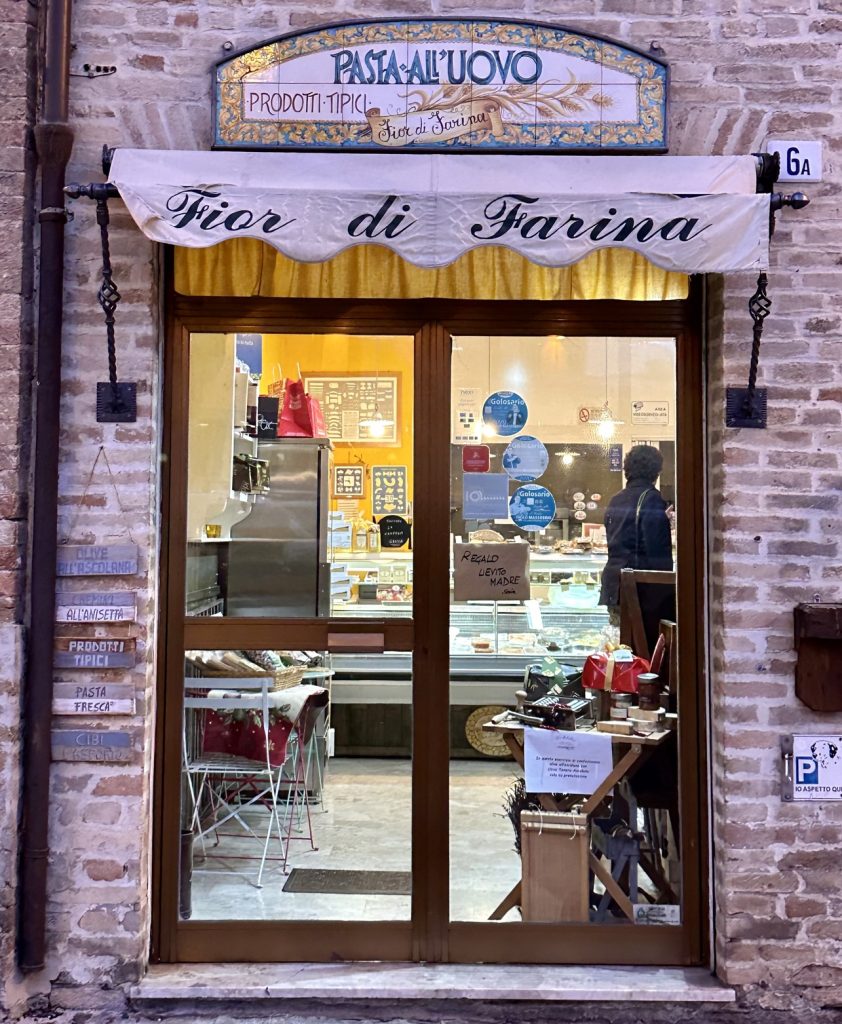
Itinerary in the Piceno: a journey in the Marche through history, culture, food and wine
“There are two liquids that are particularly pleasing to the human body: the wine inside and the oil outside.
Both are excellent natural products, but the oil is absolutely necessary,
and man was not wrong to dedicate his efforts to obtain it.”
(Pliny the Elder – Naturalis Historia)
The olive tree and the vine, the olive and the grape, the oil and the wine.
Plants that have accompanied and sometimes influenced the evolution and socio-cultural development of the peoples of the Mediterranean, since the dawn of time.
From the discovery of their food and wine attitudes to aesthetic and healthy properties, all starting from the preclassic world.
I am reminded of the Etruscans: impossible not to think of their trade of wine and oil skins along the whole peninsula and beyond. And the Greeks: the olive tree was considered sacred to the goddess Athena who, in struggle with Poseidon for the possession of Attica, won the battle by giving birth to an olive tree on the ground hit by its rod.
And again, the Romans, with their wise and pragmatic use of olives and grapes in every possible aspect of everyday life. And the Barbarians, who – after the example of the Romans – made an excessive use of them, throughout the Middle Ages – did you know that it was the Olivetan monks who started the tradition of stuffed olives (forerunner of stuffed Olive Ascolane), at first without meat only with herbs? – and then during the Renaissance, establishing itself as excellence century after century, domination after domination, from the villages to the big cities, from the curia and the courts, up to the present day.
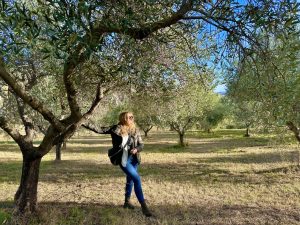
Itinerary in the Piceno: a journey in the Marche through history, culture, food and wine
There is no artist, poet, writer, musician, painter, sculptor, doctor who has not – in their own way – praised qualities. There is no kitchen that has not made it the perfect base of dishes and drinks, and there are no medical-biological research that have not ascertained curative, aesthetic and/or therapeutic properties.
A thousand-year tradition in Italy, and in particular in many of its central-southern regions that have become famous worldwide for the cultivation of olive groves and vineyards, including Le Marche.
A tradition that has accompanied over the centuries the cultural, social and gastronomic evolution of generations of men and women, farmers, traders, entrepreneurs and simple consumers, and that especially in the Piceno has given rise to stories, tales and many realities, companies and excellences known all over the world, which today deserve to be heard, explored, lived and told.
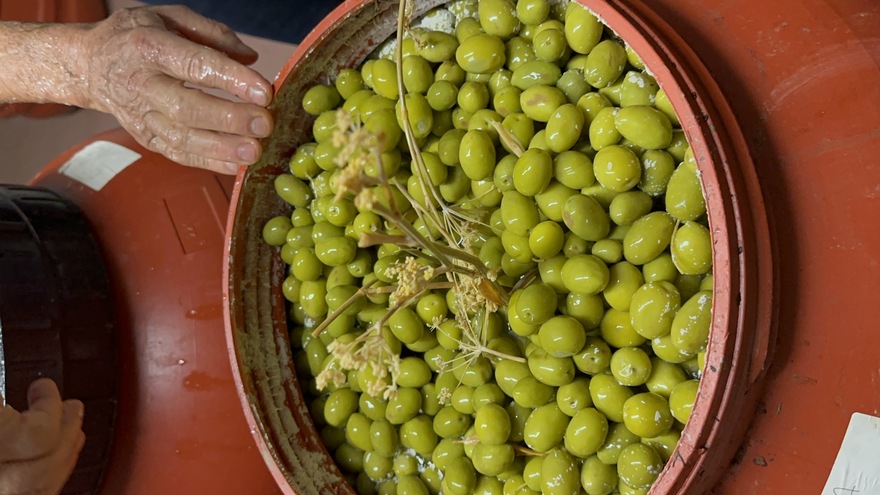
Itinerary in the Piceno: a journey in the Marche through history, culture, food and wine
“The Marche hill, facing inland, is almost a large and natural Italian garden. It is not the Tuscan hill, nor the Umbrian hill.
It’s sweet, serene, pathetic, shiny, pointless. Passing through the cultivated valleys on sunny days
you can see all the plants shining in unison as if the leaves were coated with wax.”
(Guido Piovene)
An itinerary in the Piceno, to be said complete, cannot be separated from the tasting experiences and tastings of the excellence of the territory, to be carried out strictly on farms, wineries, farmhouses and distilleries that have a close connection with the history and tradition of the Piceno itself.
Find down here those that I have had the opportunity to experience in person, and that I would recommend, from distillates to olive oil and Oliva Ascolana, passing through the best wineries in the area.
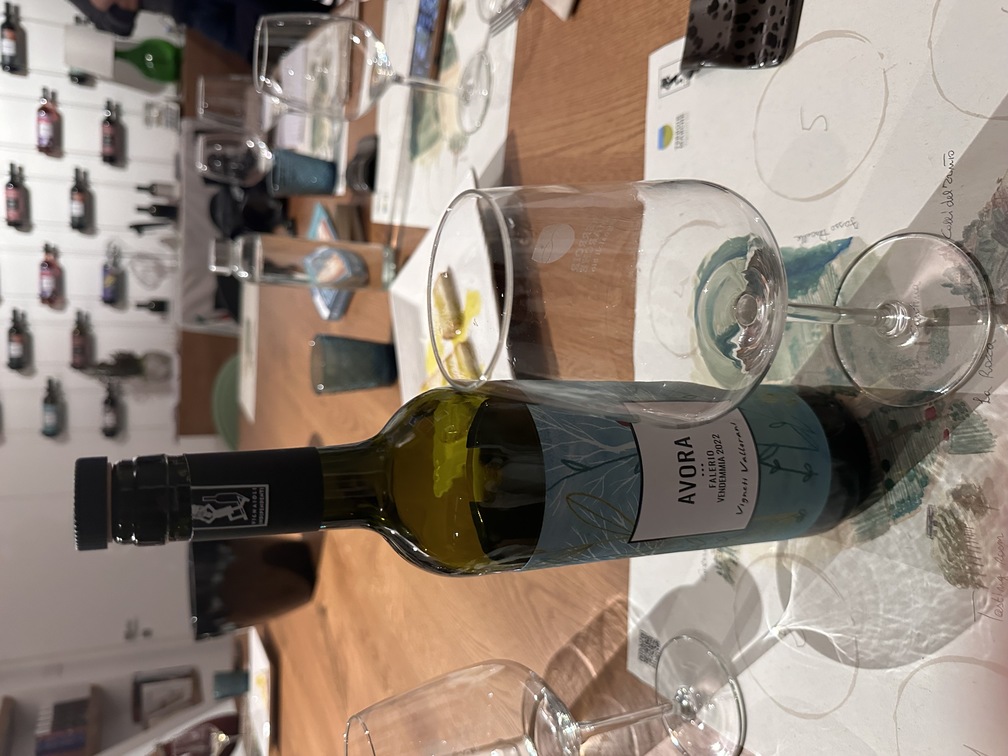
Itinerary in the Piceno: a journey in the Marche through history, culture and food and wine
“The work of the distiller is comparable to that of a painter, where the palette is the territory and the brushes
are the botanists, that with expertise and skill are used and combined in order to excite the palate
with scents and flavors that condense the most precious the Piceno has to offer.”
(Introduction to Ngricca Distillati Piceni)
“From pots to cauldron”, this is in short the story of Luca De Cesaris and his family.
From chef to local expert and passionate grower of medicinal herbs, flowers and everything you need for the distillation and infusion of liqueurs and spirits of his Agridistilleria Artigianale ‘Ngricca, “in order to make you live a unique taste emotion linked to Piceno.”
Here everything is “handmade and with meaning”, following the values of tradition, territory and excellence of raw materials.
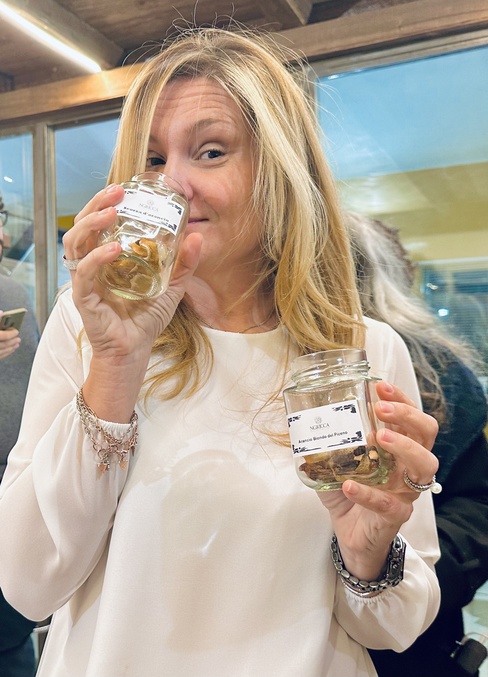
Itinerary in the Piceno: ‘Ngricca Distillati Piceni, Spinetoli
The result?!
Mistrà Classico and Ruffiano, Gin Travertino, Artemisio Vermouth, Genzià, precious honeys ‘Ngricca and other special products.
You can contact Luca to book a tasting (and you can also order his products directly) through the contacts of the website – find them here – and do not forget, in addition to tastings and his anecdotes, to make him tell you the story of the name of the distillery, closely connected to his family’s.
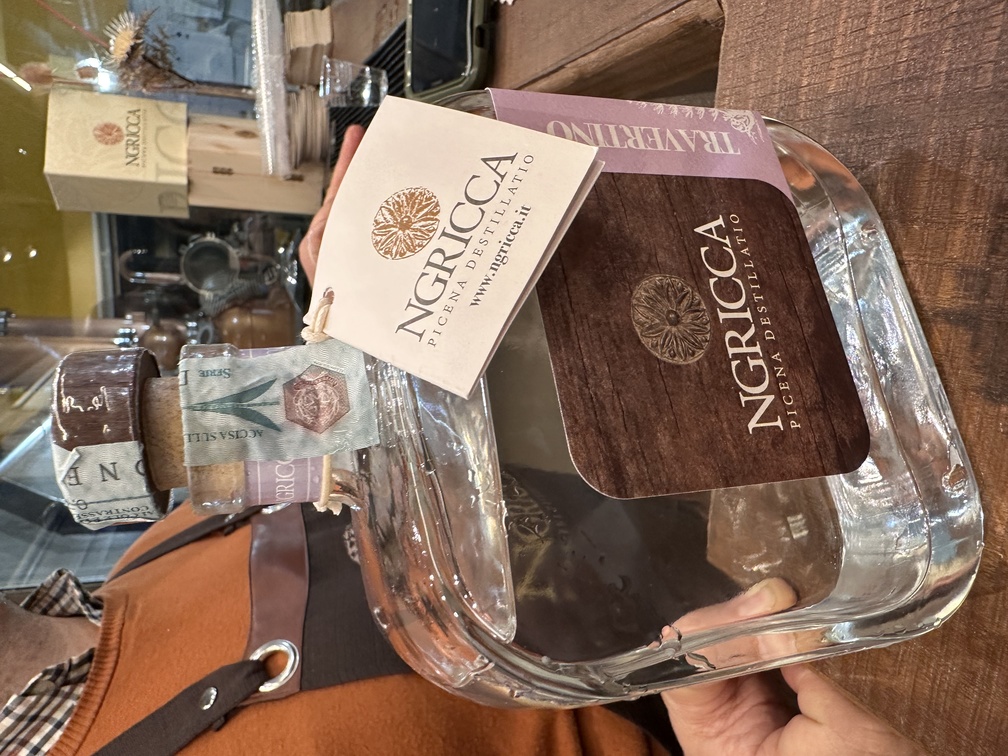
Itinerary in the Piceno: ‘Ngricca Distillati Piceni, Spinetoli
“Guardians of tradition and landscape.”
(Vallorani Vineyards)
For over a century The Valloranis have been dedicated to the care of their vineyards and the production of wines that embody all the essence and typicality of the Piceno territory, practicing sustainable agriculture, respecting local traditions, the environment and the beauty of the landscape.
A painstaking and passionate work that, from grape harvest to bottling, gives life to products that now represent a real pre-eminence of the area, namely Avora – Falerio DOP Bio, Zaccarì – Offida Passerina DOCG Bio, Lefric – Marche Bianco BIO, Octavum – Marche Rosato IGT BIO, Polisia – Piceno Superiore DOP Bio, Konè – Piceno Superiore DOP and Sorlivio – GP Marche Rosso BIO.
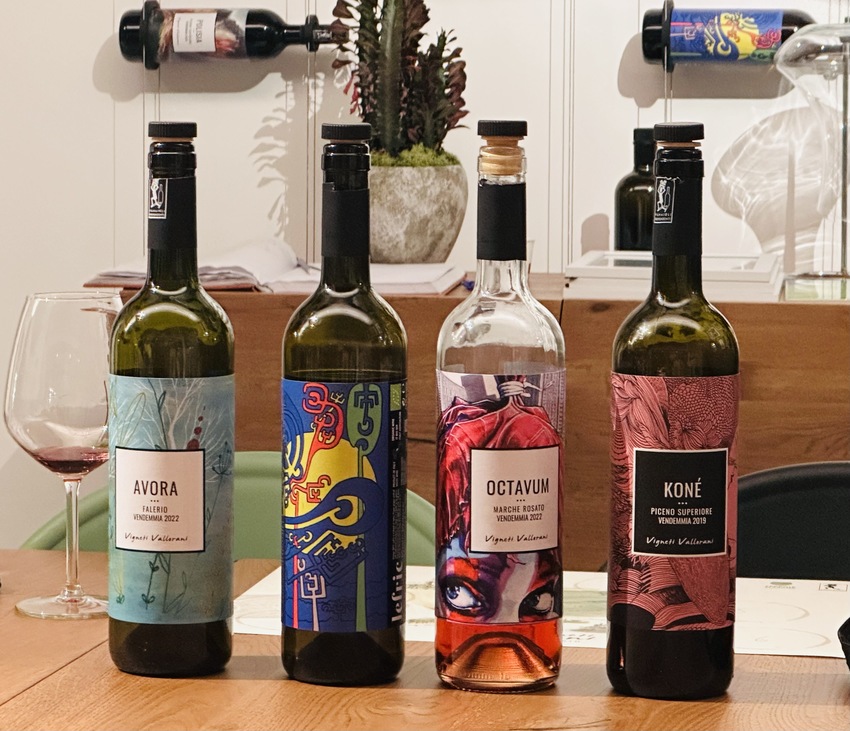
Itinerary in the Piceno: Vallorani Vineyards, Colli del Tronto
A particularity, that ties even more this historic company to its territory.
The wine labels reproduce paintings by Piceno artists, each wine is linked to a work and each wine has a name connected to the local tradition of the Vallorani family, an excellence in the excellence.
The Vallorani Vineyards organize tastings with tours and events.
“Our vineyards surround the winery, on top of a sunny and ventilated hill 200m above sea level, between the Sibillini and the Adriatic Sea. Montepulciano, Sangiovese, Pecorino, Passerina, Trebbiano and Malvasia are the autochthonous varieties that we breed in a medium-textured soil, basically clayey and of excellent drainage capacity. A wide range of spontaneous vegetation naturally protects our vineyards, safeguarding the biodiversity necessary for plant health.”
Here you can download their brochure. For further information on reservations and experiences I invite you to look the official website of the Vallorani Vineyards up.
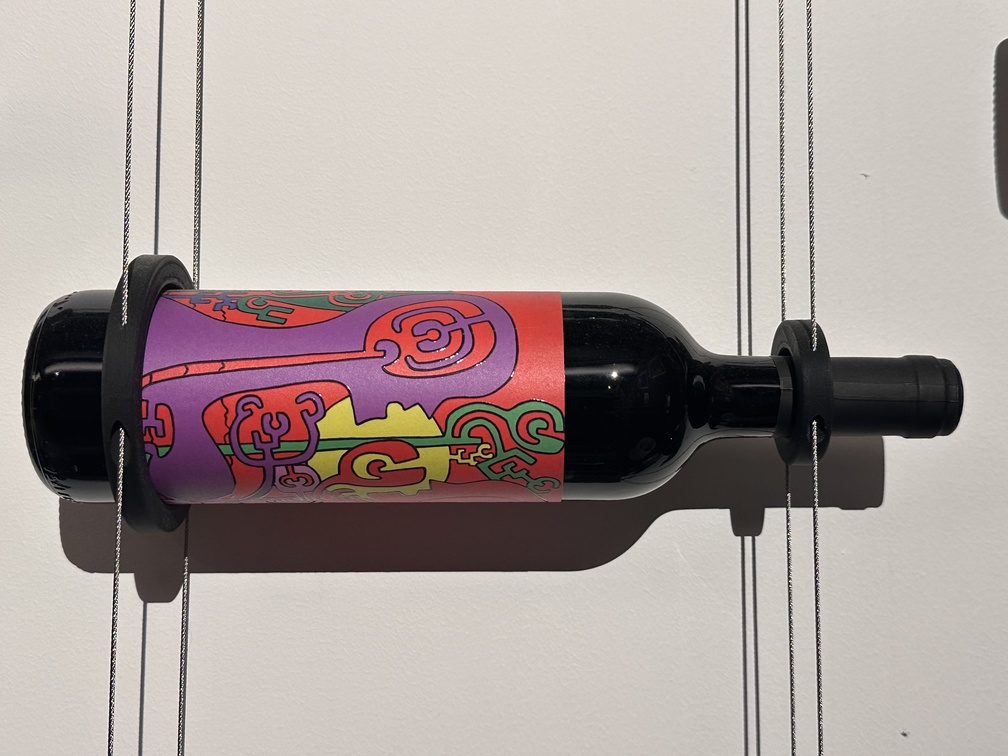
Itinerary in the Piceno: Vallorani Vineyards, Colli del Tronto
“To evaluate the oil, sight is not needed, on the contrary it can deceive.
What matters is smell and taste.”
(Barbara Alfei)
The olive, and with it the oil, act as a real thread of an itinerary in the Piceno.
Among the most particular and fascinating experiences that I made during my trip should be mentioned without a doubt the one dedicated to the technical introduction and to the EVO oil tasting, that the talented Barbara Alfei – among the most competent tasters at international level, as well as head of panel at the Agency for Innovation in the agro-food and fisheries sector of the Marche (AMAP) – proposed us during an evening at Agriturismo La Solagna.
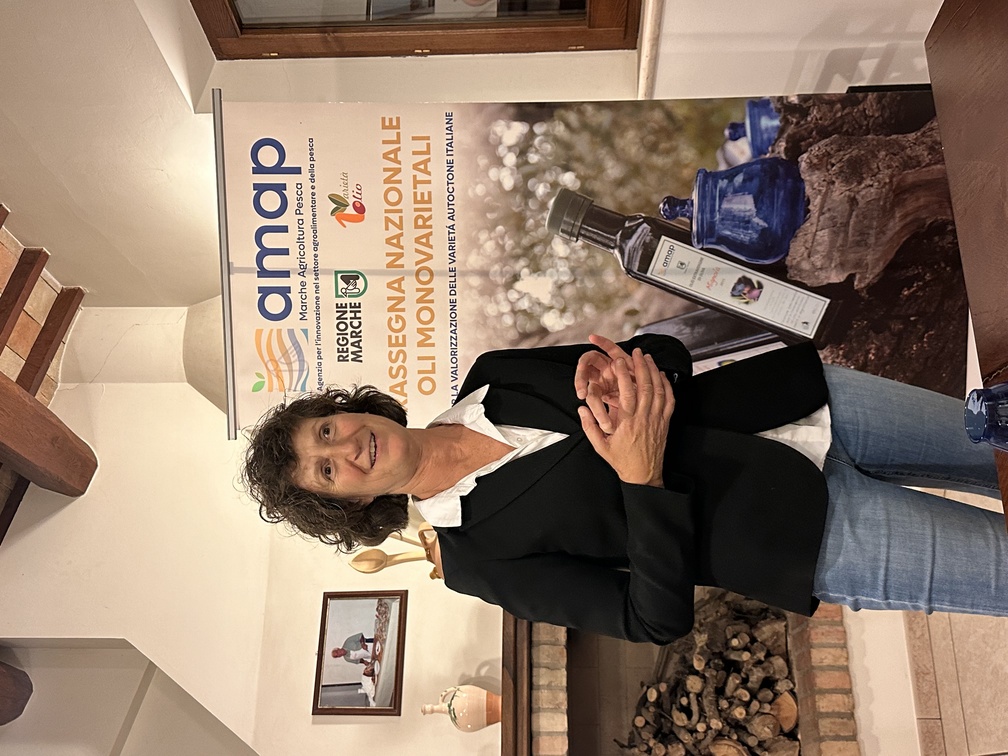
Itinerary in the Piceno: Evo Oil Tasting with Barbara Alfei, AMAP Marche
A wonderful sensory journey into the world of olive oil and its qualities, even 23 only in the Marche, 600 throughout Italy.
To learn more, I invite you to look the official website of AMAP Marche up or follow directly Barbara to take part in one of her events.
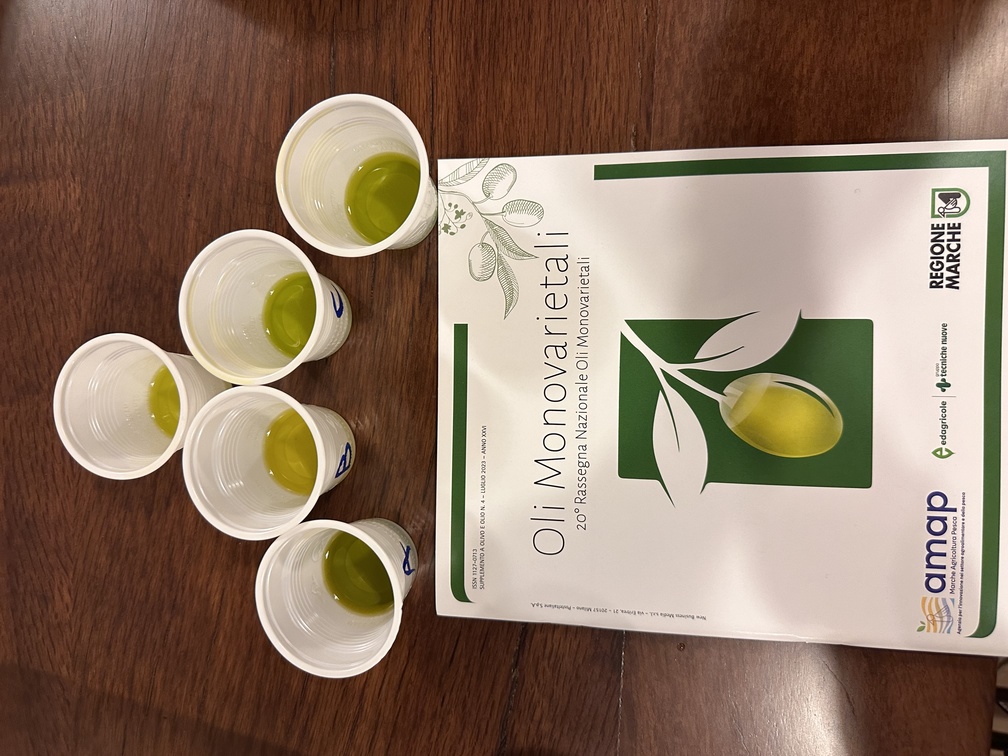
Itinerary in the Piceno: Evo Oil Tasting with Barbara Alfei, AMAP Marche
Nestled in the heart of the hills of Castigliano, the Azienda Agricola “Zucchera” – again the name comes from the history of their family, the Silvestris, and refers to the goodness of some of its original members, goodness that, I must recognize, is renewed every generation. Alessandro, Antonella, Filippo, Maria and Francesco are wonderful people! It represents a real oasis of peace and authenticity, from every point of view.
Here an excellent oil is produced from a superior local olive, and together with it all that is needed to support the animals, cereals, etc.
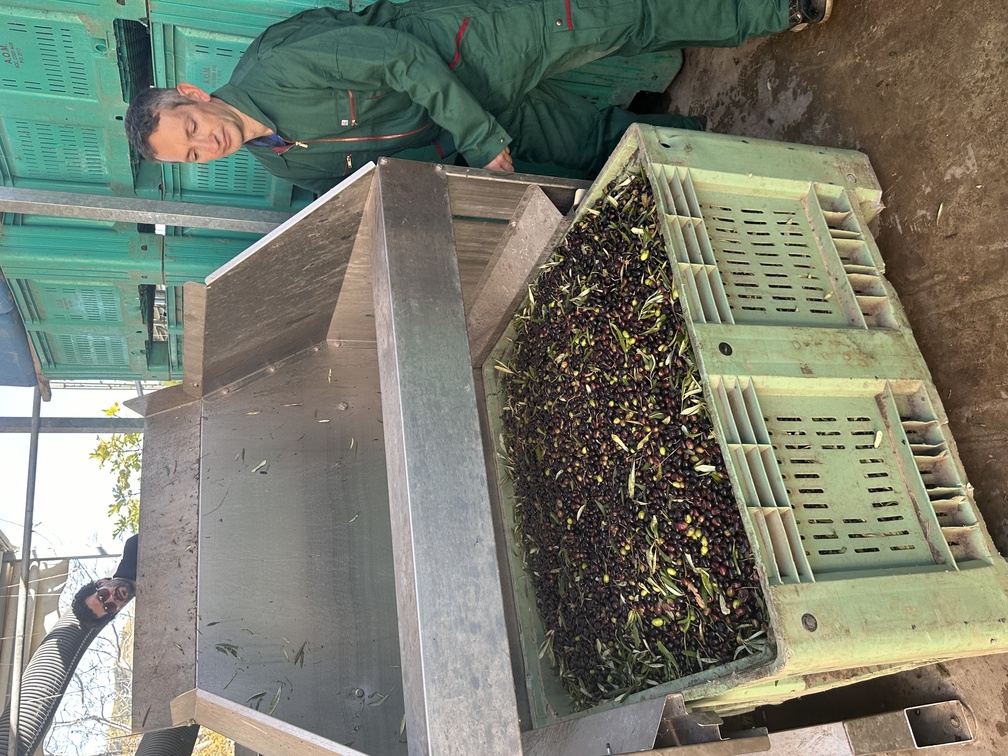
Itinerary in the Piceno: Azienda Agricola “Zucchera” & Cantina Quntì, Castignano
The kindness, the hospitality (in summer you can stay at their facility), the high quality of their products, which must be associated with the tasting of wines of Cantina Quntì – phenomenal their Pecorino – will make your stay here unforgettable.
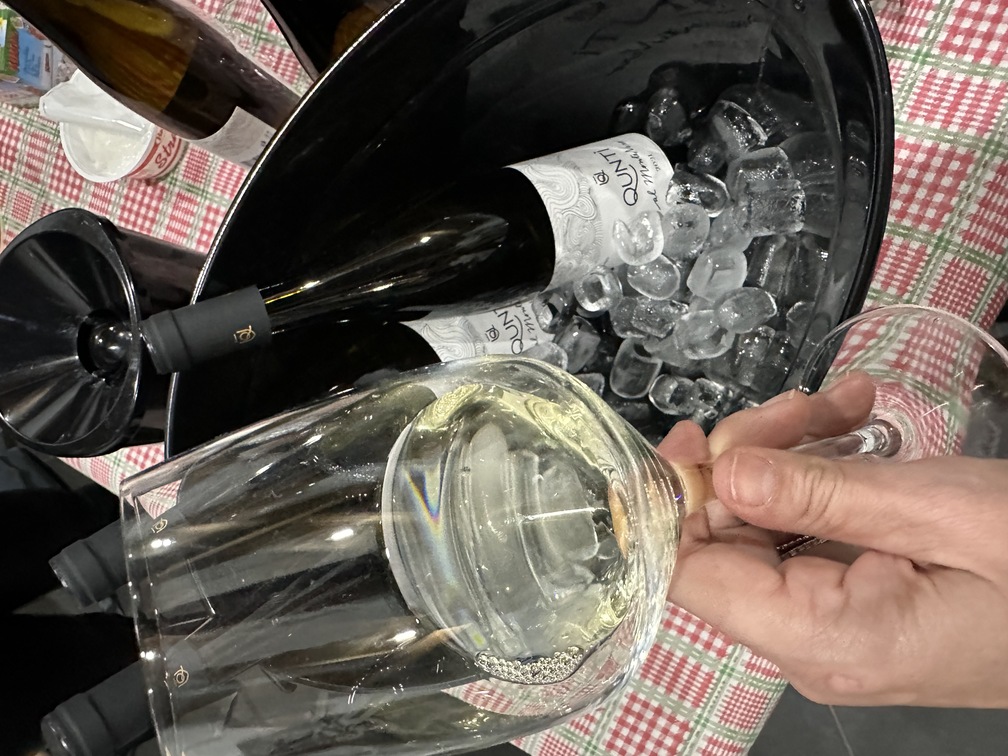
Itinerary in the Piceno: Azienda Agricola “Zucchera” & Cantina Quntì, Castignano
Also in this case, I invite you to look the official website of the company “Zucchera” up to book a tasting or to order their products.
During my experience at “Zucchera”, I also had the opportunity to attend an interesting and illuminating presentation on oils and high dietary fats made by Dott. Piero Sciamanna, food technologist. Here for further info and contacts.
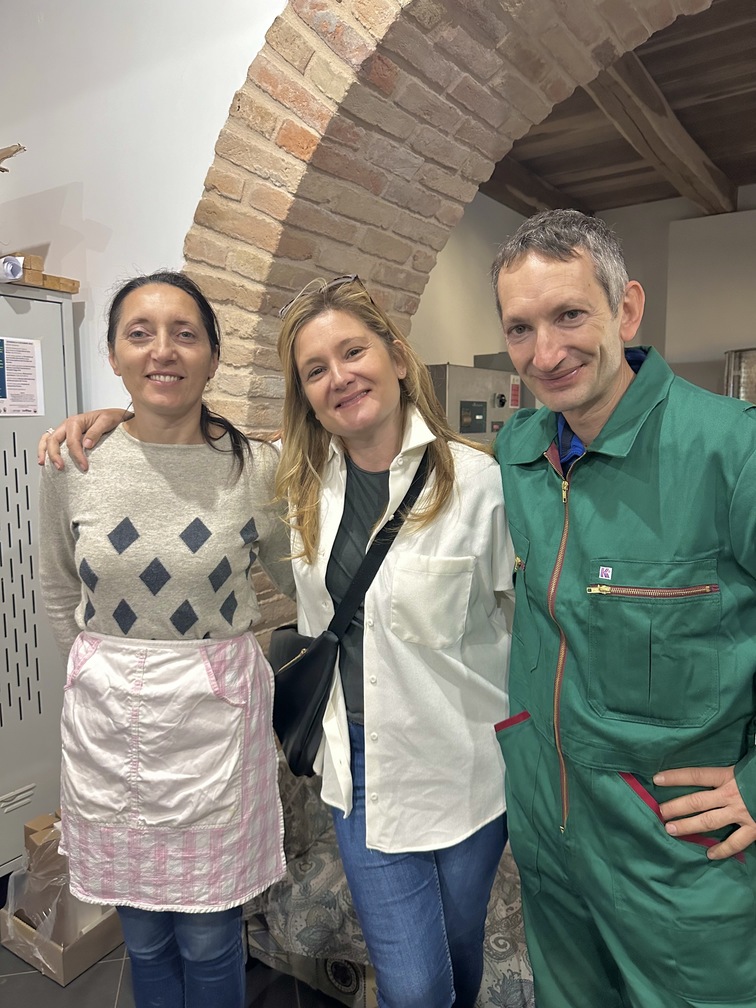
Itinerary in the Piceno: Azienda Agricola “Zucchera” & Cantina Quntì, Castignano
“It all started with a visionary entrepreneur, in love with his homeland. It is not possible to understand the current philosophy of Cantina Villa Pigna if we do not make a brief excursus on its history, from its foundation until today. //This journey can only start from the figure of its founder, Costantino Rozzi, as well as my father. //Entrepreneur from the thousand facets, from the roads to the bridges, from the hotels to the restaurants, he has always valued that sense of belonging to the territory that he loved so much, to cover for more than 30 years the role of president of the Ascoli Calcio, taking the team up to the series A and B for several seasons. The purchase of the first vineyards dates back to 1968.
Ambitious spirit and always looking for new challenges, he immediately understood that to “conquer the world” with red Piceno, the vineyards alone are not enough; for this reason in 1970 he built the winery completely surrounded by vineyards, which extends over 7000 square meters on two levels, one of which is underground. This allows you to have a room dedicated to the aging of naturally air-conditioned wine at constant temperature both in winter and summer.”
(Anna Maria Costanza Rozzi)
A winery that tells an important piece of Marche history, proudly run by the energetic Anna Maria, Constantino’s daughter, and in turn by her son Giorgio, both specialists in Rosso Piceno Superiore, in all his
“interpretations” since 1970: Rozzano – traditional interpretation of Rosso Piceno DOC SUPERIORE, and Vellutato – International interpretation of Rosso Piceno DOC SUPERIORE.
Cantina Villa Pigna organizes tastings, tours to the vineyard and events. For further information I invite you as always to look their official website up.
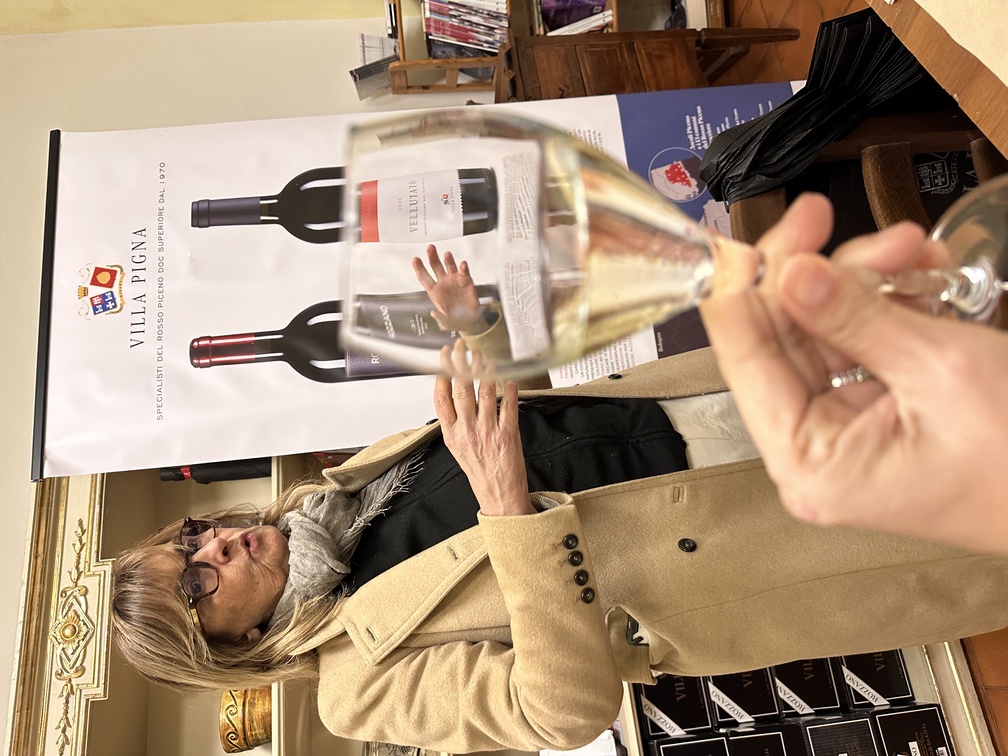
Itinerary in the Piceno: Villa Pigna Winery, Offida
It is no coincidence that the Case Rosse Cooperative has been associated over time with the name “Sapori del Piceno”, because in this company, which today also boasts a restaurant, you can taste the true gastronomic excellence of the Piceno, in all its “combinations”, that is Oliva Ascolana del Piceno DOP, natural, in brine and, of course, filled.
A certainty for over 40 years, the Cooperative was born in the Eighties as a cooperative of land to address cereal, viticulture, olive and fodder. In 1992 it created one of the first farmhouses in the Marche, and in 2005 it realized, following the recognition of the DOP mark to the tender Oliva Ascolana, a “tender” plant that has been added to previous crops.
For information and/or reservations I invite you to look their official website up.
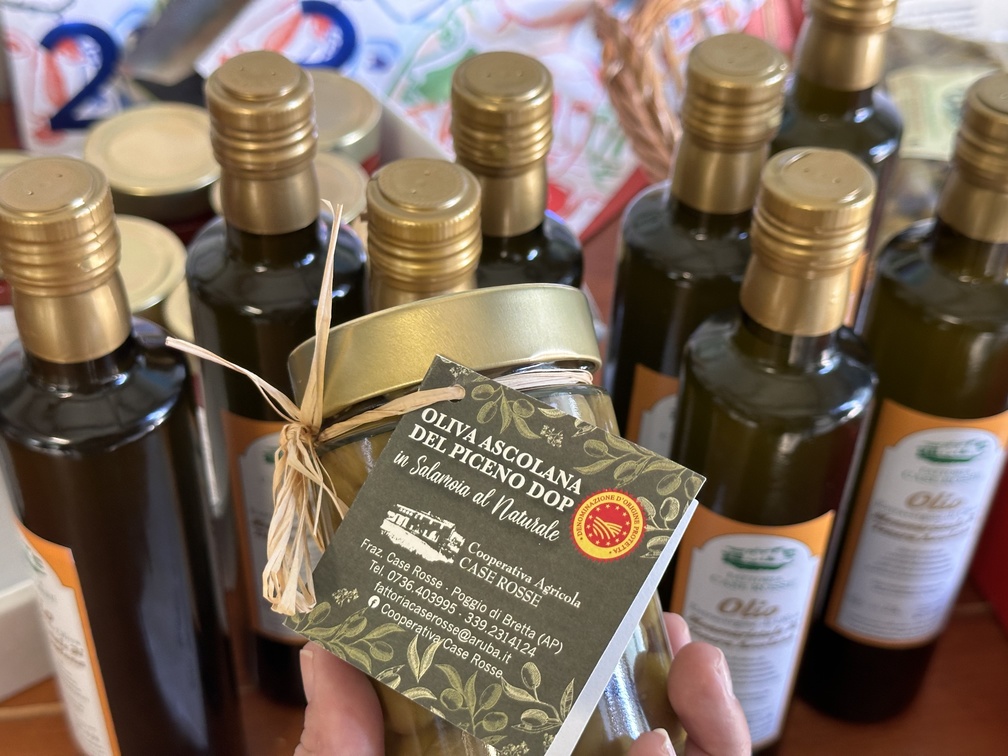
Itinerary in the Piceno: Case Rosse Cooperative, Ascoli Piceno
“Le Marche is an open book of Art History.”
(Vittorio Sgarbi)
Villages, castles, noble palaces, art galleries, churches, crypts, hermitages, museums, theatres, and various secular traditions, such as the ancient and precious art of bobbin lace. A territory infinitely rich in history, art, and culture that unfortunately many still ignore and that deserves to be valued, lived and told.
Down here are the most suggestive places, paths and experiences, tried as always personally, to be included in an itinerary in the Piceno.
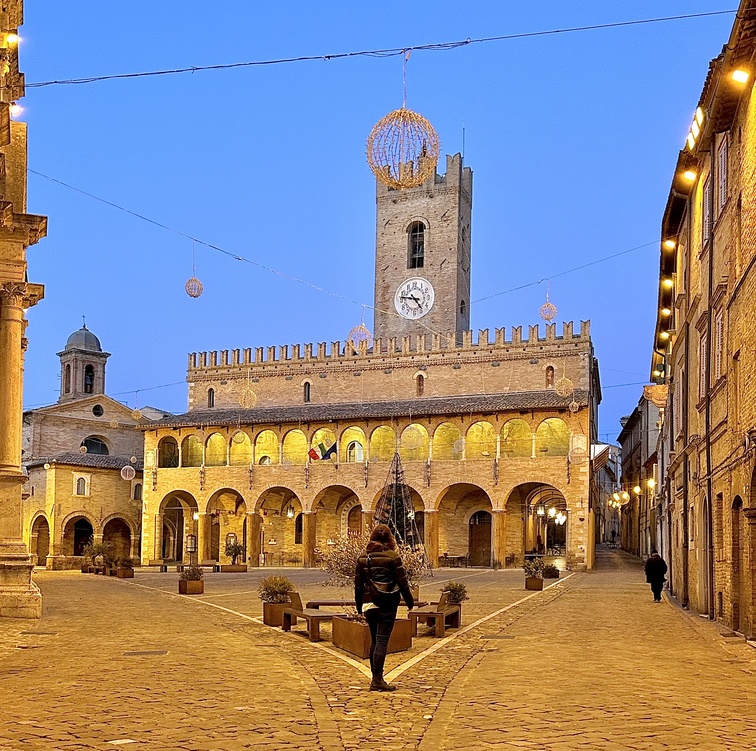
Itinerary in the Piceno: experiences, villages, museums and historical and cultural tours, not to be missed, Offida
“All of us (Italians) speak Castignanese”!
We are welcomed by the mayor of Castignano, Fabio Polini, at the beginning of our walk together discovering this ancient village, proudly indicating – right at the entrance of the village – a copy of the Stele of Castignano, today preserved at the Archaeological Museum of Ascoli Piceno, which bears the oldest inscription in Italian alphabet, dating back to 6th century B.C.
An extremely suggestive village, perched on a hill between hills and gullies, with its unmistakable pyramidal shape. The center is a succession of churches, palaces and arches crossed by cobbled streets that climb to the highest point of the country, the square overlooking the Church of Saints Peter and Paul, and from which opens an incredible view ranging from the Sibillini mountains to the Adriatic Sea.
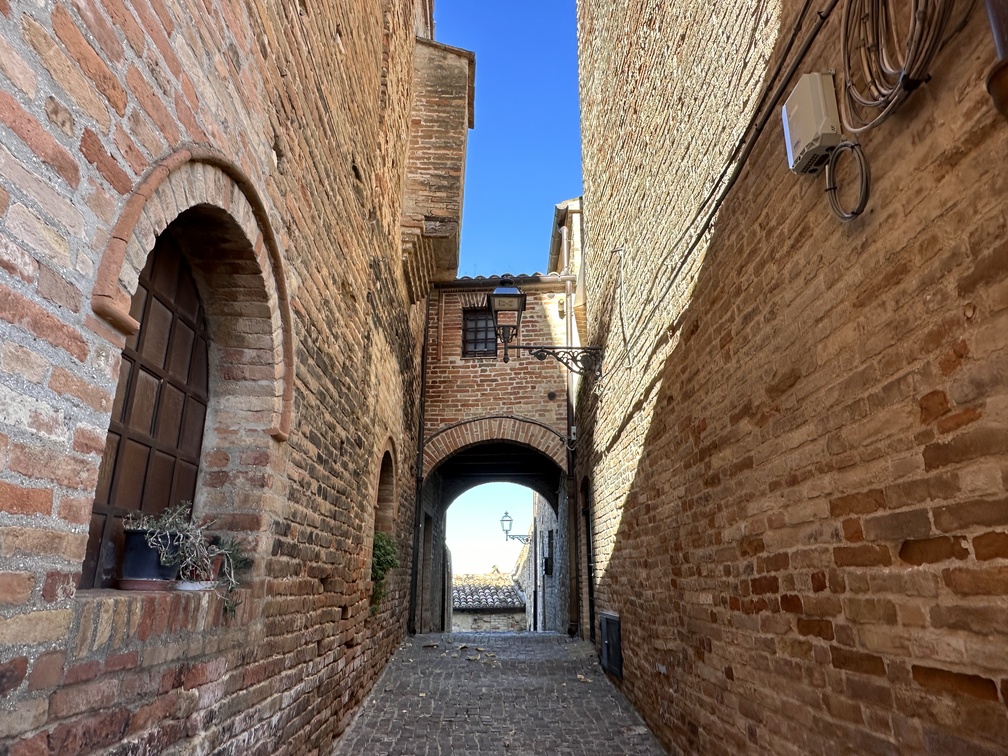
Itinerary in the Piceno: Castignano, the Templar village
Armies, knights templar and pilgrims have passed by here, leaving indelible marks in the architecture and style of the buildings of the historic village and in the cultural traditions of the country. It is no coincidence, in fact, that in the old town every year in the second half of August there is the Templaria Festival, entirely dedicated to the cultural heritage of the Knights Templar, without forgetting the Historical Carnival of Piceno, become famous thanks to the parade of Moccoli, the colorful sticks brought in procession and then burned as a propitiatory rite.
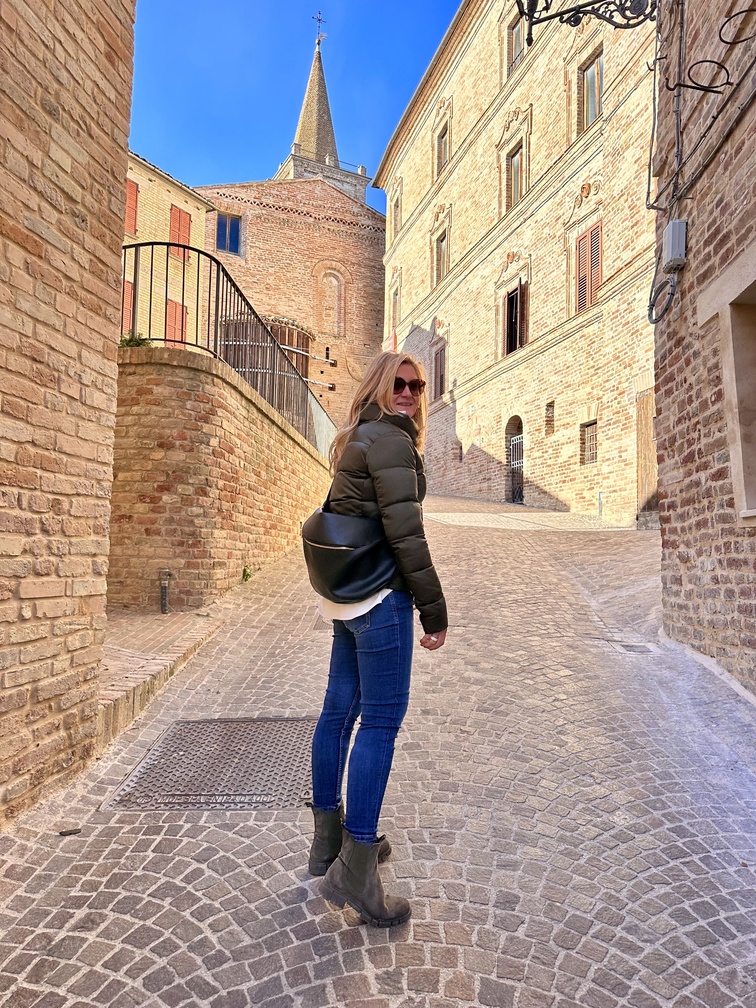
Itinerary in the Piceno: Castignano, the Templar village
Not to be missed: the Museum Complex of Sacred Art and Icons, the Church of Santa Maria del Borgo (the TAU, the templar symbol of the Santa Croce surmounted its entrance portal), the Church of Saint Peter’s Apostle with the Crypt of the Addolorata and the Church of Sant’Egidio.
More about what to see and do in Casignano, here!
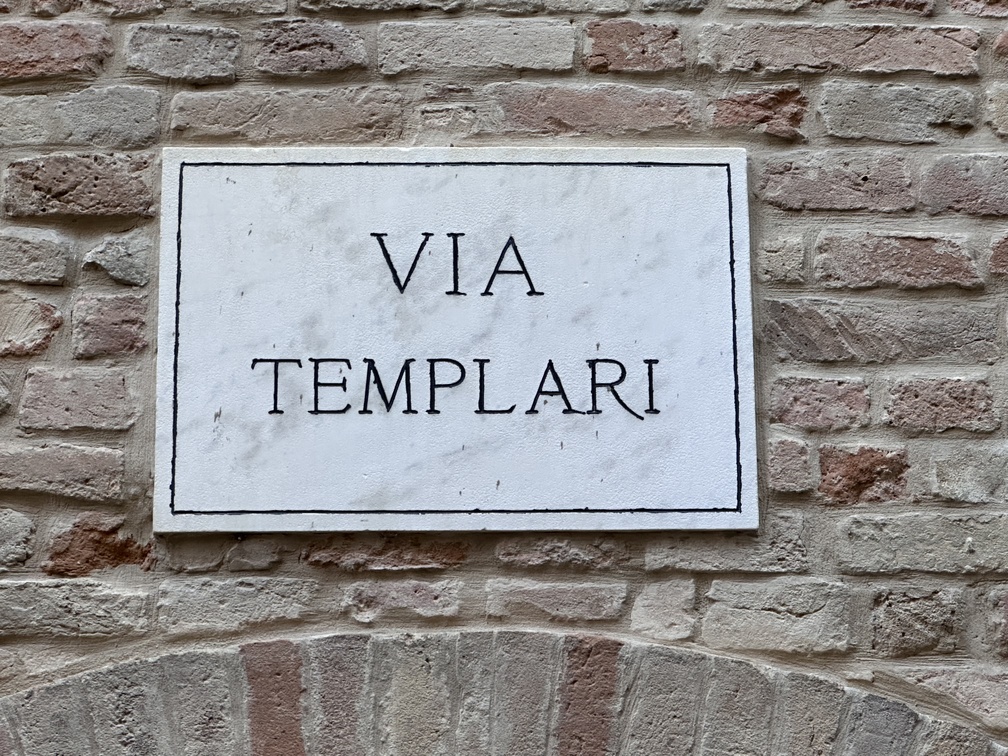
Itinerary in the Piceno: Castignano, the Templar village
“A natural dimension in which the spirit of the town of Picena is recognizable: the smile of the women working the bobbin; the smile of a generous and welcoming nature; the smile of a tasty and joyful food and wine; the smile that permeates the whole period of carnival that rub off on citizens of all ages; the pleasant and shared smile aroused by cultural events; the smile of a town that welcomes visitors with pleasure.
Unique center of natural beauty, buildings and monuments of extraordinary historical value, food and wine rich in typical products and high-quality wines, precious bobbin lace.”
(Introduction to Offida – TurismOffida)
Rightly listed among the most beautiful villages in Italy, Offida is a small treasure trove of historical, cultural, artistic and traditional treasures.
It is the village of the ancient processing of bobbin lace, the lace “burattato”, which continues uninterruptedly from generation to generation since 1400. A tradition so heartfelt that at the entrance of the village you will even find a sculptural complex dedicated to “lace makers” and in the shops of the old town you can indulge in the purchase of precious lace and even jewelry worked with the same technique.
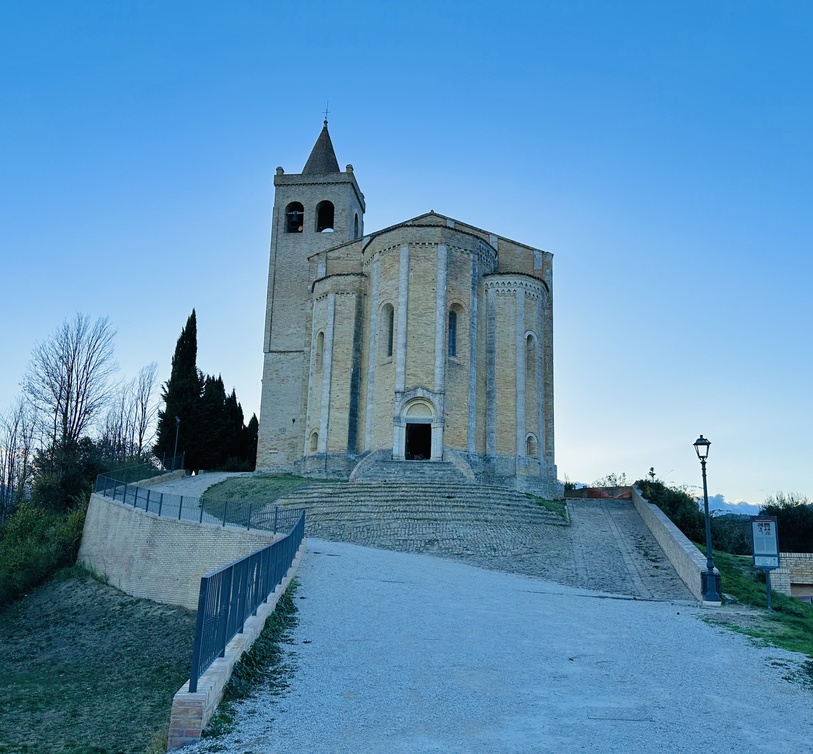
Itinerary in the Piceno: Offida
It is the city where a Carnival takes place among the most felt and particular of the region. The carnival of Lu Bov Fint, a fake bove (once true) that on Fat Friday is incited and pushed by a multitude of people through the streets of the city, only to be symbolically sacrificed, followed on Mardi Gras by the parade of bundles to burn in the large bonfire, I Vlurd.
It is the territory of excellent wines: in its countryside are produced two DOC wines, Passerina and Rosso Piceno.
It is the site of the Church of Santa Maria della Rocca, spectacularly set on a rock. Stop to admire the frescoes of the Master of Offida between the upper chapel and the (once crypt) lower chapel.
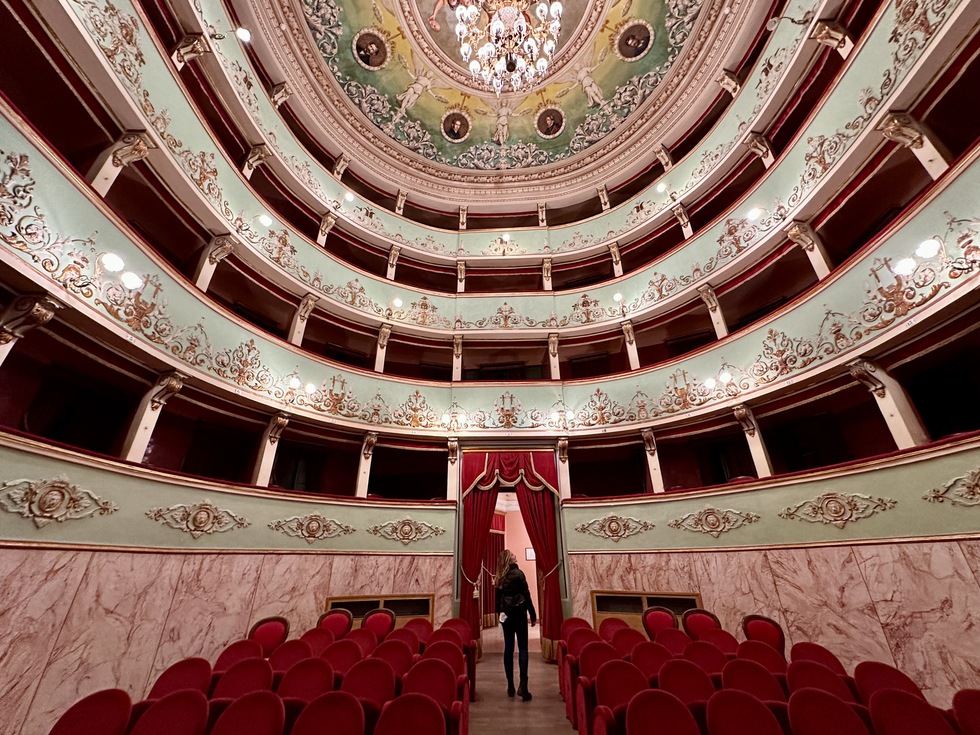
Itinerary in the Piceno: Offida
It is the spectacular triangular square with the town hall in Renaissance style, decorated with arcades and battlements, which also overlook the Church of the Collegiata and the Theatre Serpente Aureo, baroque jewel with a typical “proscenium” shape, also called “horseshoe”.
For further information about the discovery of the city, I invite you to look the official website of Turismo di Offida up, full of cues, ideas and paths to be carried out according to the period of your tour.
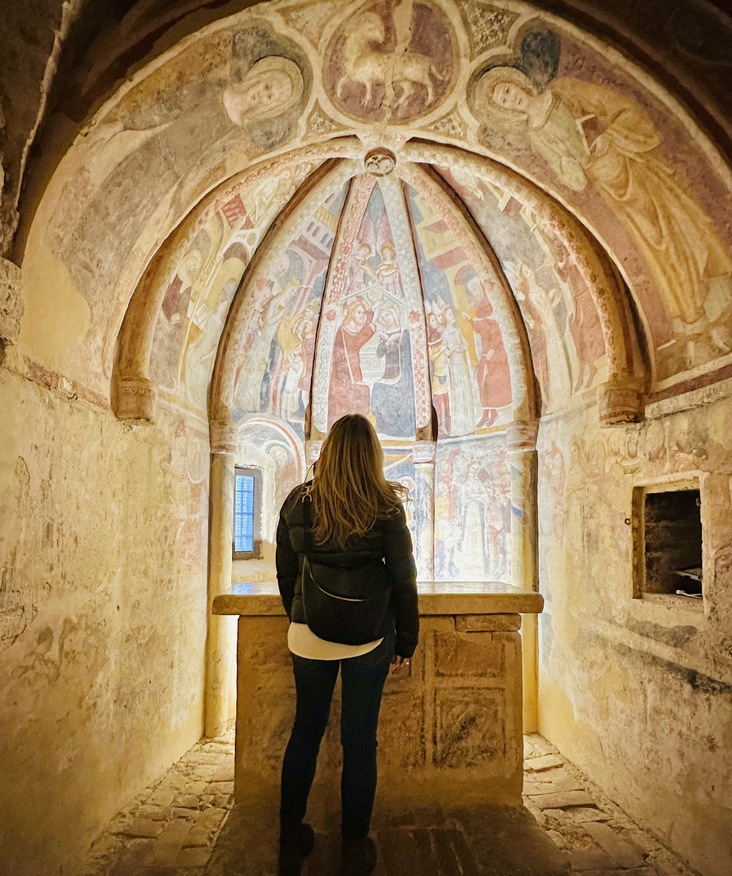
Itinerary in the Piceno: Offida
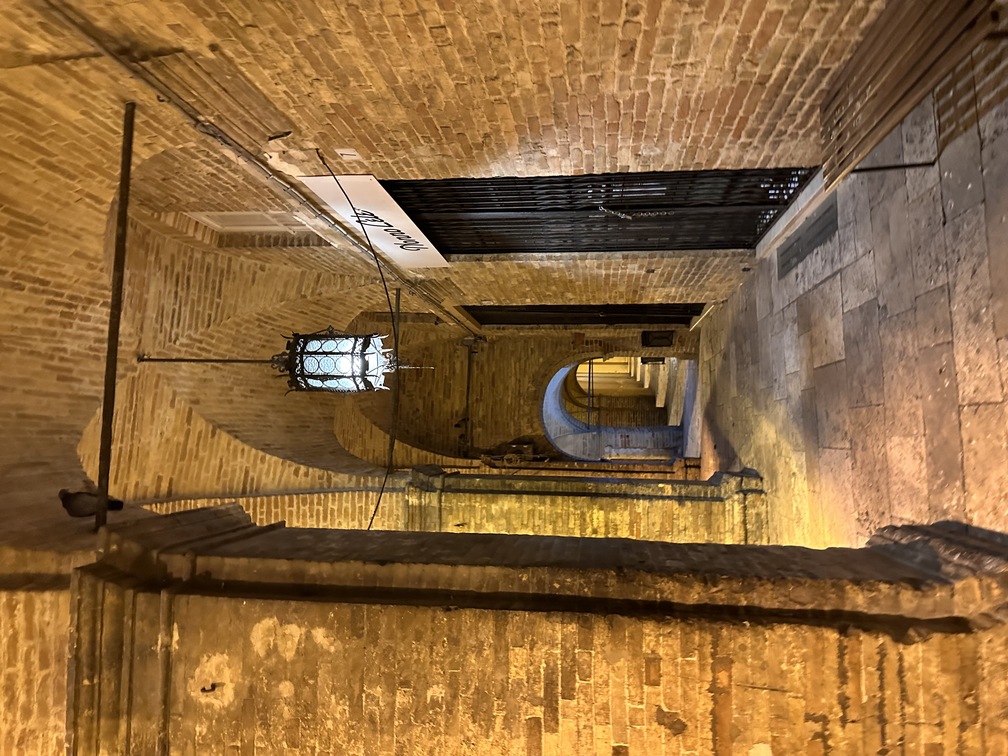
Itinerary in the Piceno: Offida
It is no coincidence that Ripatransone is called the Belvedere del Piceno.
Its strategic position makes it a natural panoramic terrace, whose view on the clearest days ranges to 360 degrees, from the Adriatic Sea, only 12 km afar, up to the Sibillini, from the Conero to the Gargano.
Treat yourself to a walk in its charming old town along Corso Vittorio Emanuele, which cuts the village in two from north to south, and walk along what is considered to all intents and purposes the narrowest alley in Italy. About 40 cm wide, built inside a social housing complex dating back to 1400, this small bottleneck between two buildings has all the credentials to be defined as an alley – passable, paved, combining two streets and with a small window overlooking the interior – and as such, considered its measures, boast of the title of “the narrowest in Italy”!
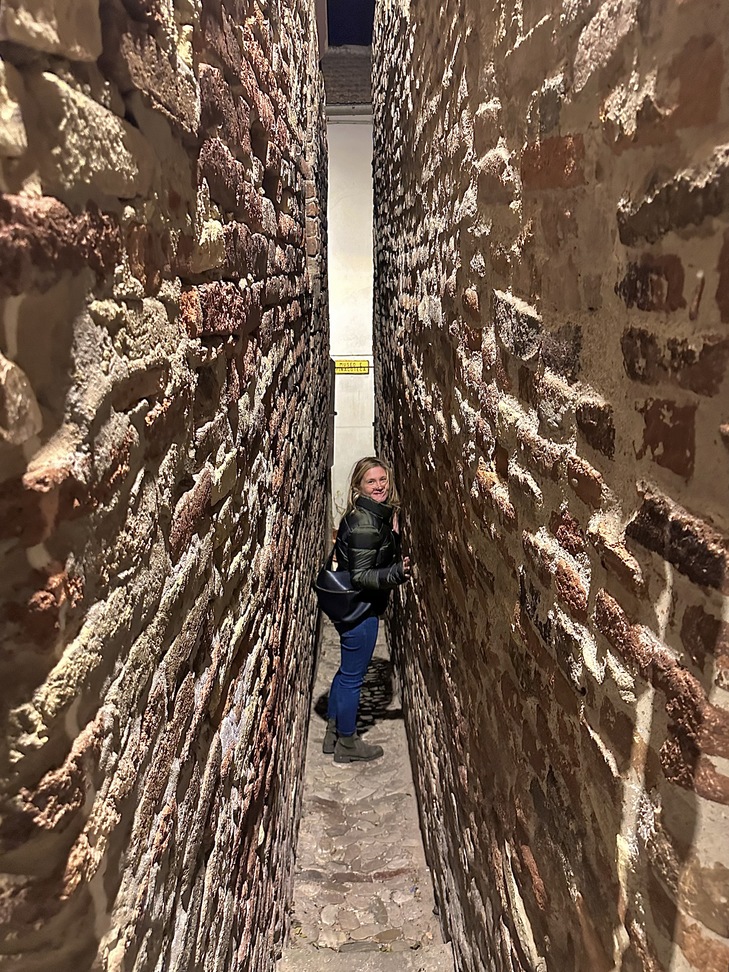
Itinerary in the Piceno: Ripatransone and the “narrowest alley in Italy”
Do not forget to stop for a photo in the nearby and picturesque Via Margherita Staircase and to reach Piazza XX Settembre to visit the real jewel of the city, the Theatre Luigi Mercantini, located in the Palazzo del Podestà and counted among the historical theatres of the Marche. It was inaugurated in 1824 as Teatro del Leone, but later changed its name in honor of Luigi Mercantini, Risorgimento poet, originally from Ripatransone, author of La Spigolatrice di Sapri.
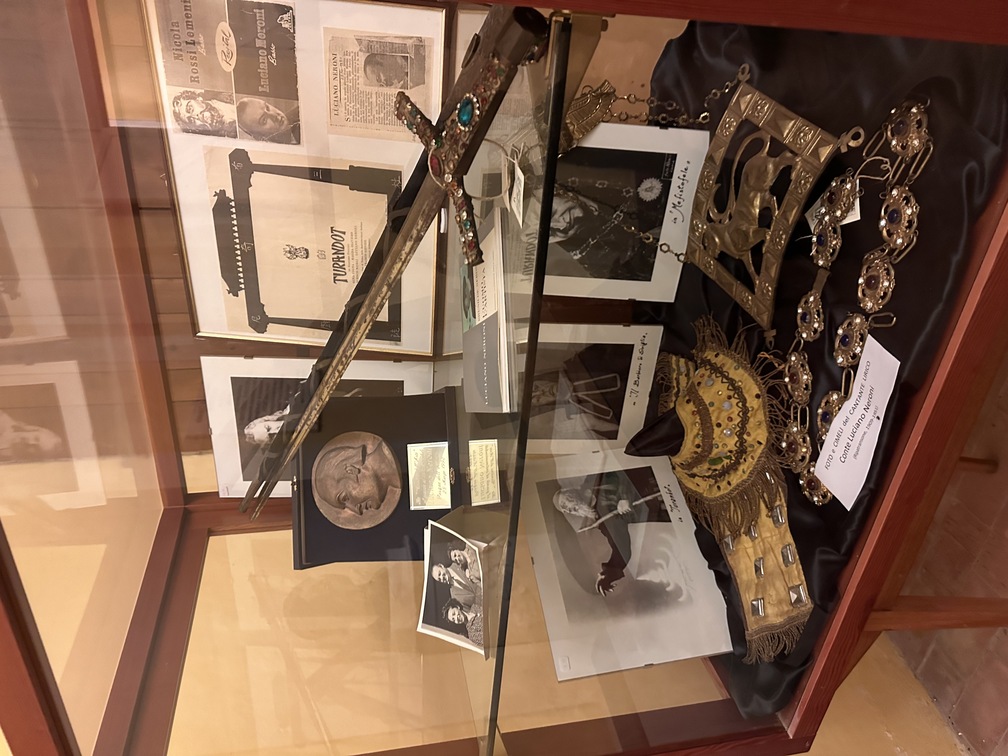
Itinerary in the Piceno: Ripatransone and the “narrowest alley in Italy”
Also in this case, being Ripatransone rich in historical places, as well as museums and churches worthy of note, I invite you to look the official website of Visit Ripatransone up, that, according to the period of your visit, will provide you with all the information you need to optimize your path.
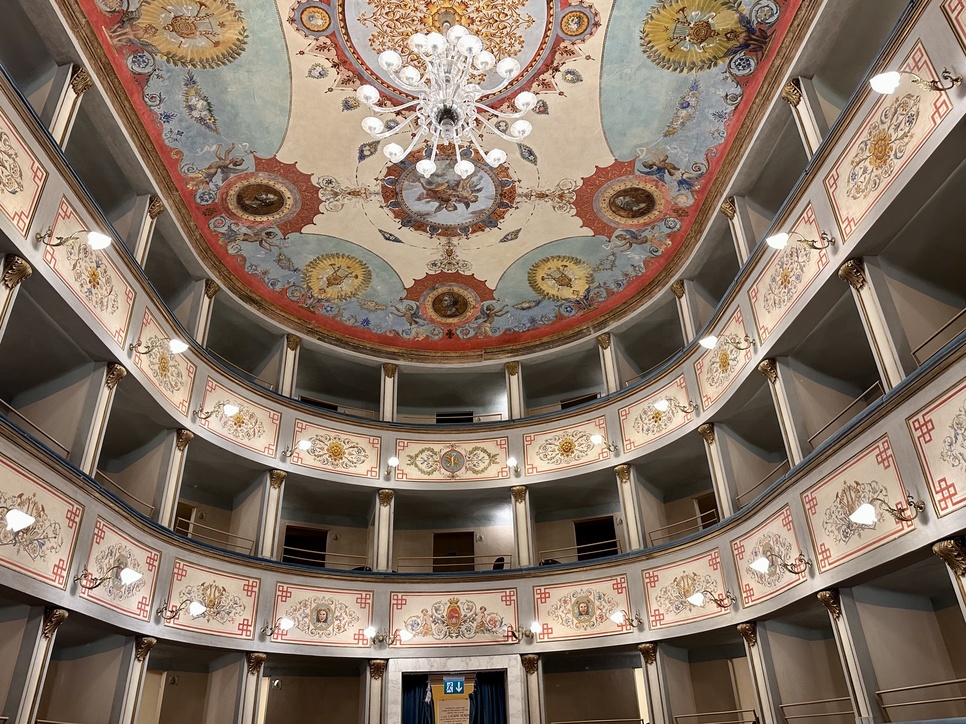
Itinerary in the Piceno: Ripatransone and the “narrowest alley in Italy”
The Temple of Sant’Emidio alle Grotte is one of the most representative and beloved places of worship of Ascoli.
According to tradition, their patron, Saint Emidio, after being beheaded on 5 August 309, walked here with his head in his hands to be buried in one of the natural caves previously used by Christians as catacombs.
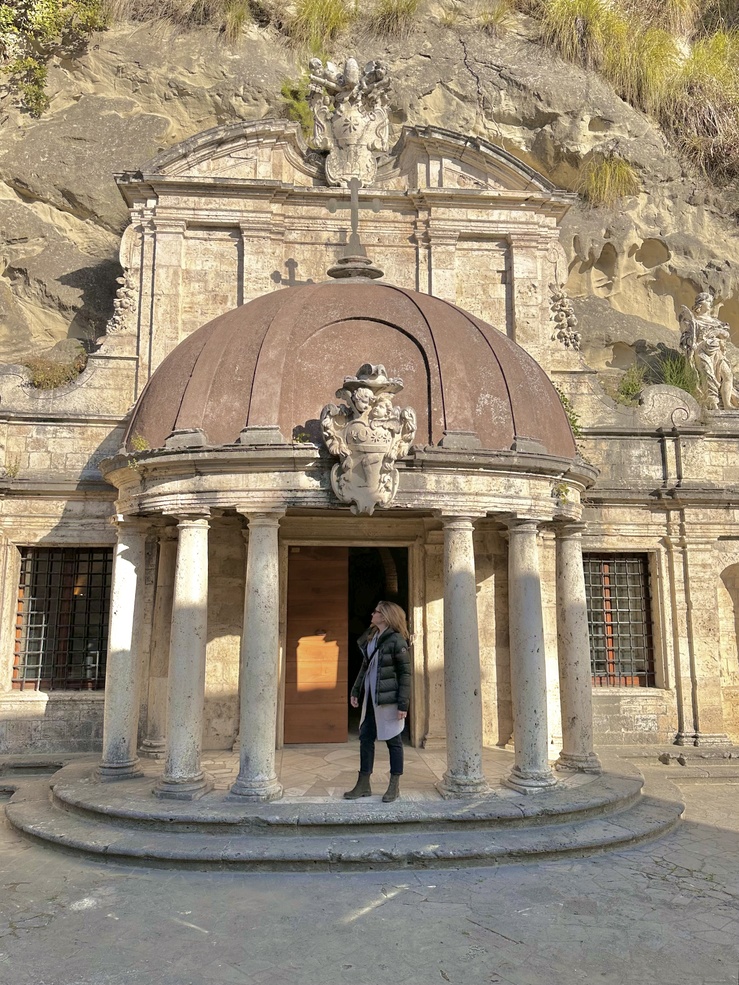
Itinerary in the Piceno: Temple of Sant’Emidio alle Grotte, Ascoli Piceno
The remains of Saint Emidio and his disciples remained in this site for almost 500 years, until they were moved to the Cathedral of Ascoli where they still rest in the Crypt of Saint Emidio.
However, this sacred site was always impressed in the collective memory and in the heart of the Ascolans and so, to thank the saint for having preserved the city from the earthquake of 1703 – who became for this reason the protector of earthquakes – between 1717 and 1721 by the will of the bishop of Ascoli Giovanni Gambi was built the Tempietto with inside the ancient burial (for many peaople miraculous) that we can still admire today.
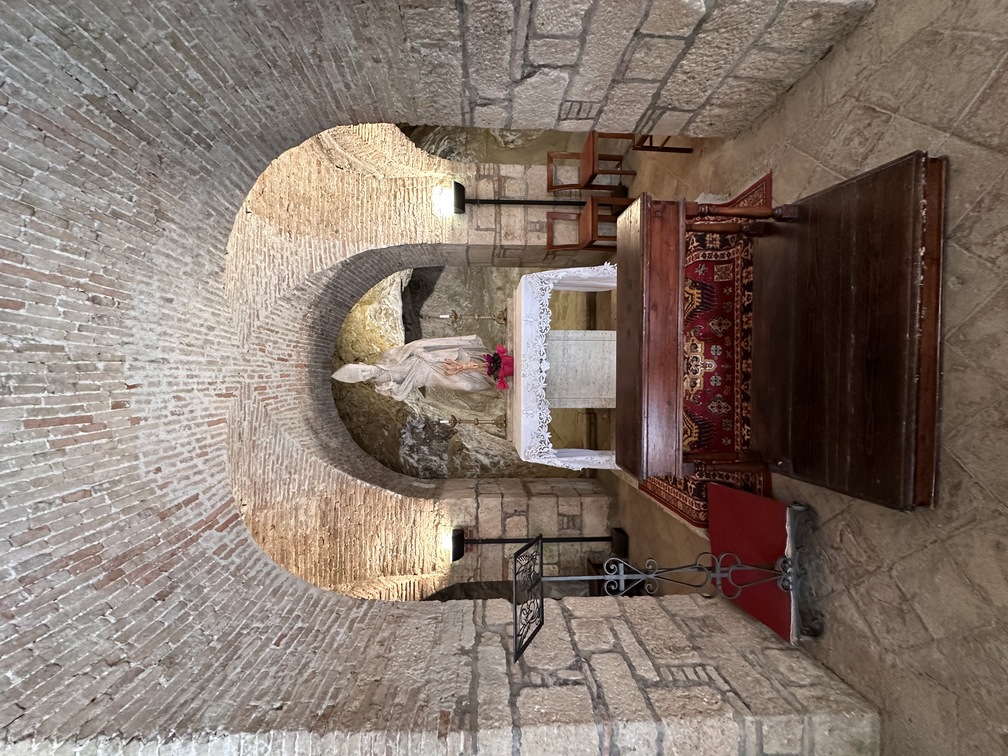
Itinerary in the Piceno: Temple of Sant’Emidio alle Grotte, Ascoli Piceno
The access and guided tour of the Emidian sites (catacombs, temple of Sant’Emidio alle Grotte, church of Sant’Ilario) is possible thanks to the commitment of the members of the cultural association Sant’Emidio in the world.
You can contact them here.
Itinerary in the Piceno: Temple of Sant’Emidio alle Grotte, Ascoli Piceno
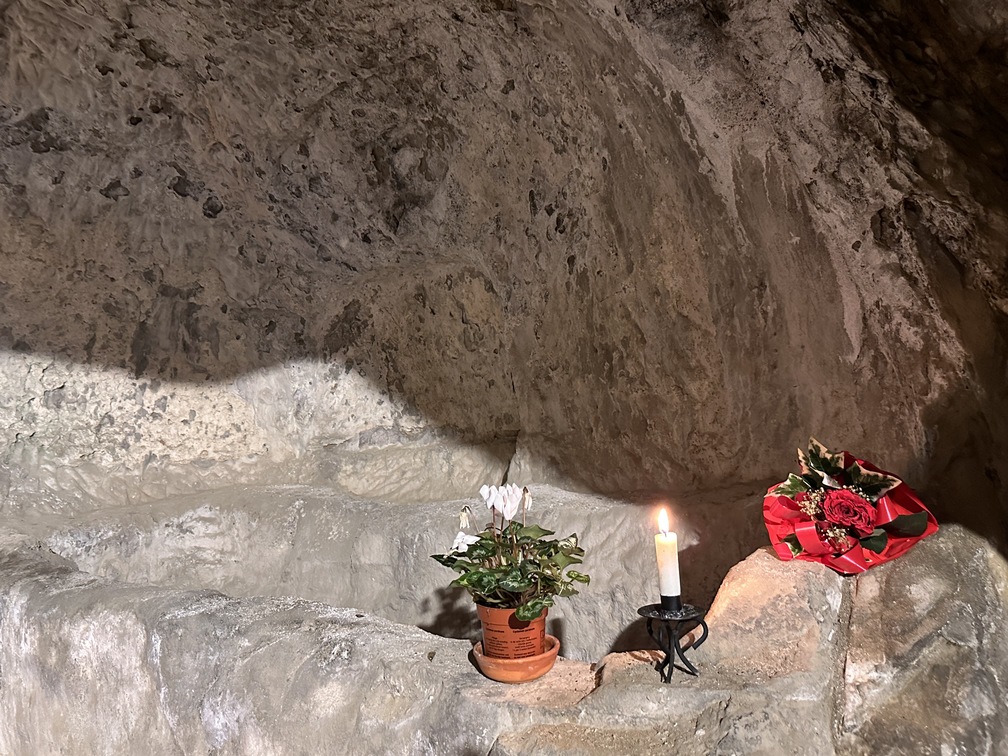
Itinerary in the Piceno: Hermitage of San Marco, Ascoli Piceno
“The Templars guard the Hermitage of San Marco in Ascoli Piceno welcoming all the faithful and visiting tourists.”
This is the beginning of the visit to the Hermitage of San Marco, perched on a rocky wall in the deepest heart of the forests of Colle San Marco, a spiritual refuge for monks and anchorites since ever.
The Hermitage was built at the beginning of the thirteenth century by the Cistercian monks who made it a place of welcome for pilgrims, penitents and ascetics. Not surprisingly on September 3, 1289, Pope Nicholas IV issued a papal bull with which he granted plenary indulgence to those who visited the hermitage on the day of the feast of Saint Mark.
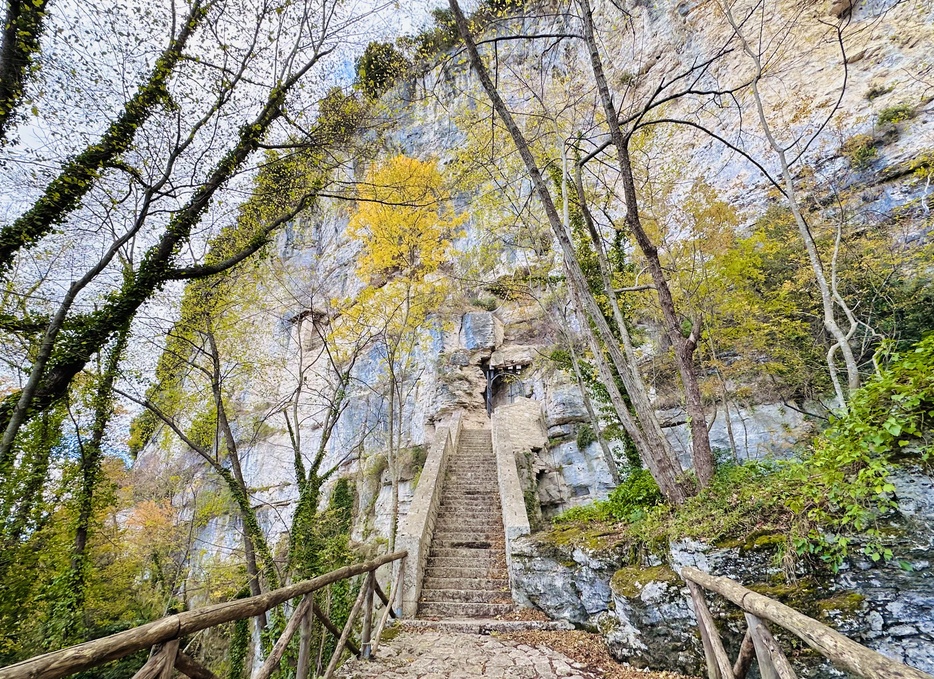
Itinerary in the Piceno: Hermitage of San Marco, Ascoli Piceno
The whole complex lived a century of great religious ferment and well-being until 1387, when Bishop Antonio Archeoni – following suspicions of heresy – suppressed the monastery and granted the Sgariglia family the right of patronage over the Hermitage and its relevance, which then passed to The Tibaldeschis who built a church and placed the tombs of their deceased.
From 1400 onwards the Hermitage, which passed into the hands of more concessions and owners, suffered a slow and progressive deterioration and abandonment to the present day, suffering theft, devastation, vandalism and becoming a place of satanic masses and illicit meetings.
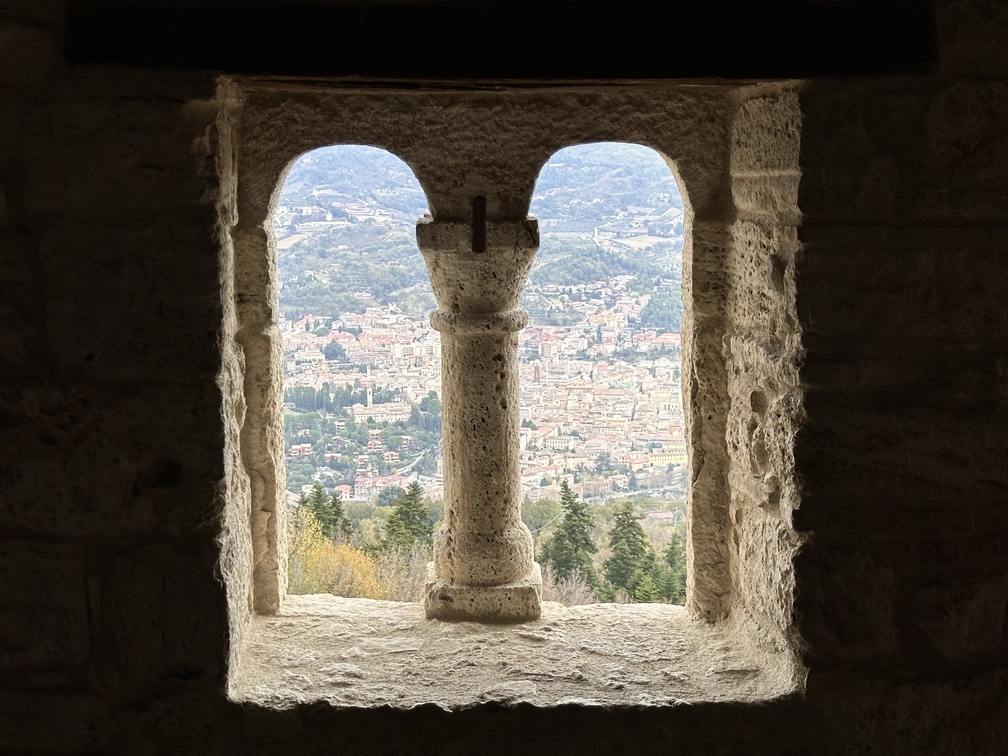
Itinerary in the Piceno: Hermitage of San Marco, Ascoli Piceno
Only thanks to the reclamation intervention of the Templar Association today APS, which personally takes care of the guided tours, today the Hermitage has been recovered and restored to its maximum splendor. Inside it is still possible to find the remains of the first frescoes painted by the Cistercian monks on the walls, as well as those relating to the passage of the Knights Templar.
The easiest way to reach the Hermitage is to park your car at the Cemetery of Piagge and then follow an uphill path of about 20 minutes.
To book a guided tour you can contact directly the volunteers of the Templar Association today APS.
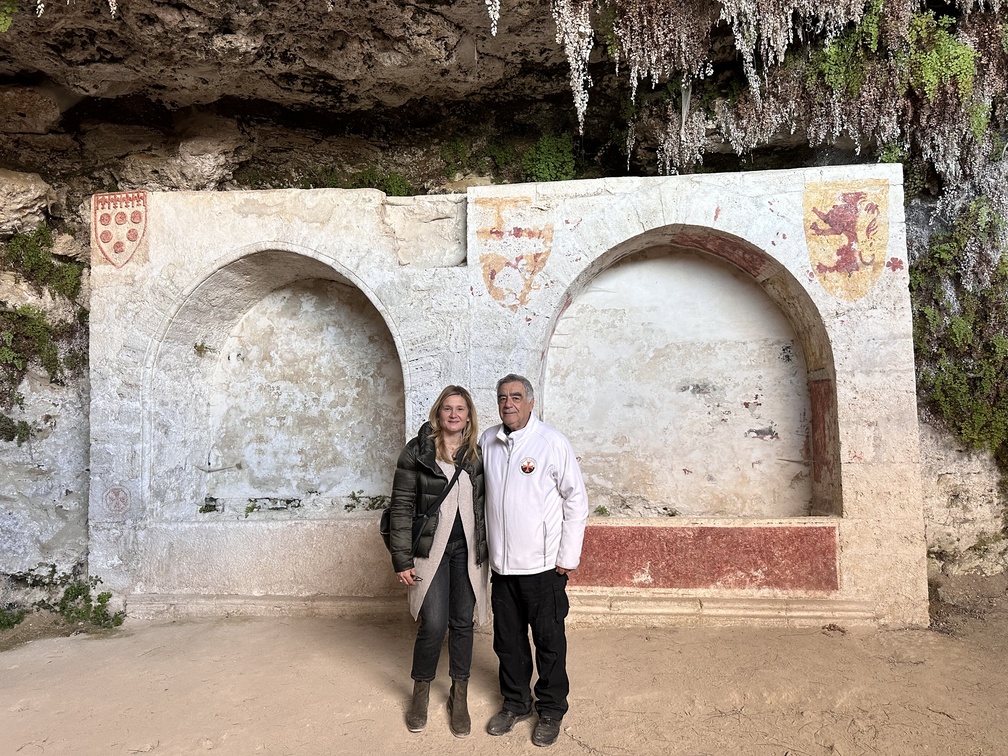
Itinerary in the Piceno: Hermitage of San Marco, Ascoli Piceno
The mummies – and their authentic seventeenth-century clothes and accessories – of Monsampolo del Tronto.
In 2003 during the restoration works of the crypt of the church of Maria SS Assunta were found about twenty mummified bodies, due to the particular microclimate present inside the crypt, in a completely natural way, where the so-called Brotherhood of Good Death used to bury the dead.
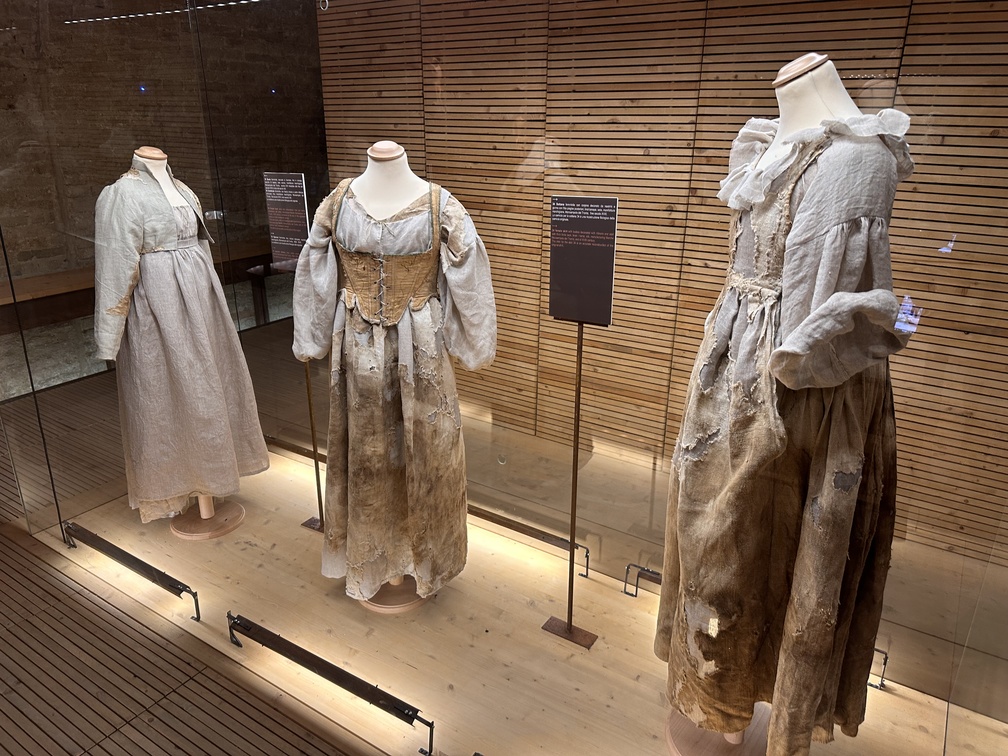
Itinerary in the Piceno: Museum of Mummies, Monsampolo del Tronto
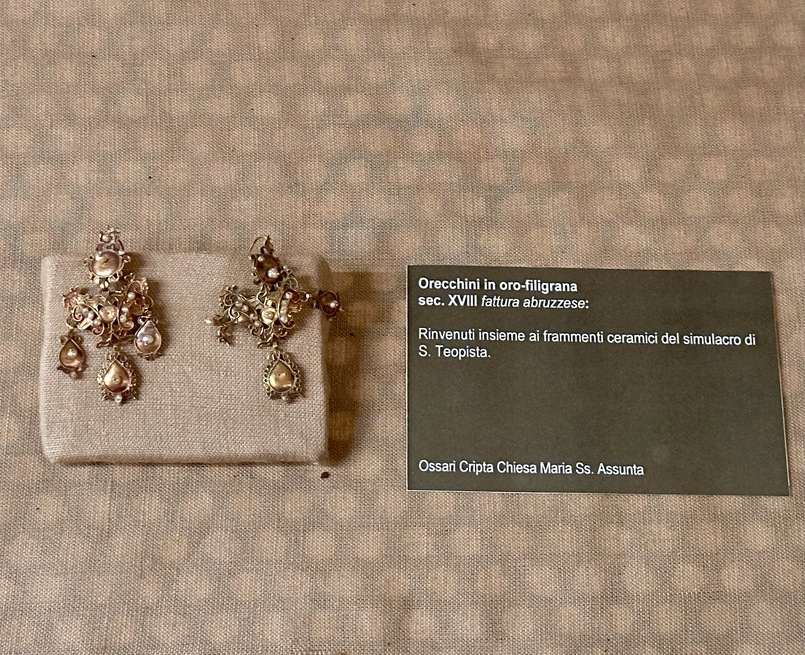
Itinerary in the Piceno: Museum of Mummies, Monsampolo del Tronto
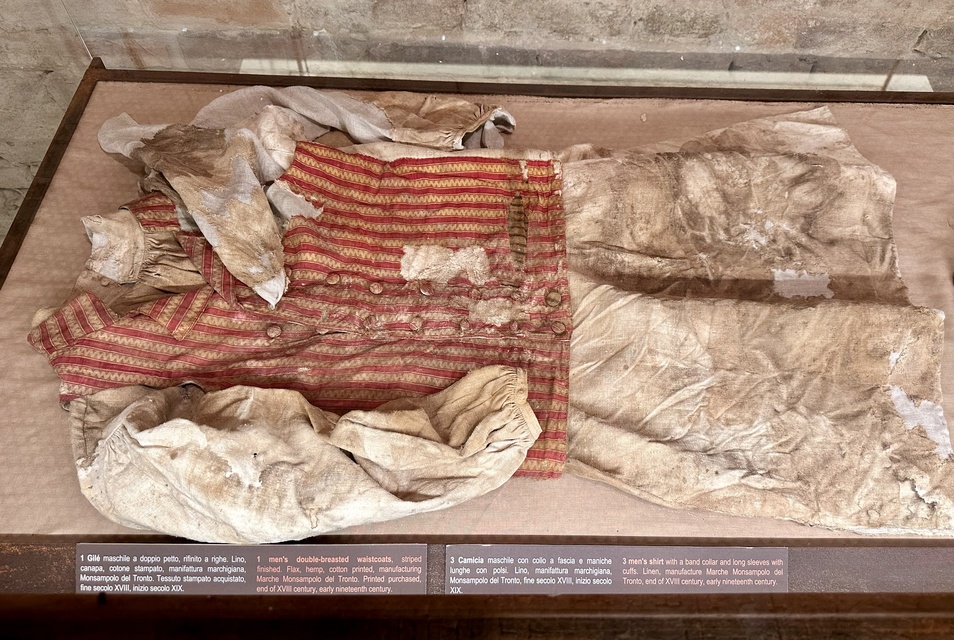
Itinerary in the Piceno: Museum of Mummies, Monsampolo del Tronto
The discovery of the mummies wearing their burial clothes, in a good state of preservation – there is even a wonderful bobbin lace shirt has allowed to open a cross-section on the fashions of the time and carry out, according to the materials used, a real in-depth study of fabrics and their trades between 1600s and 1700s, something impossible before.
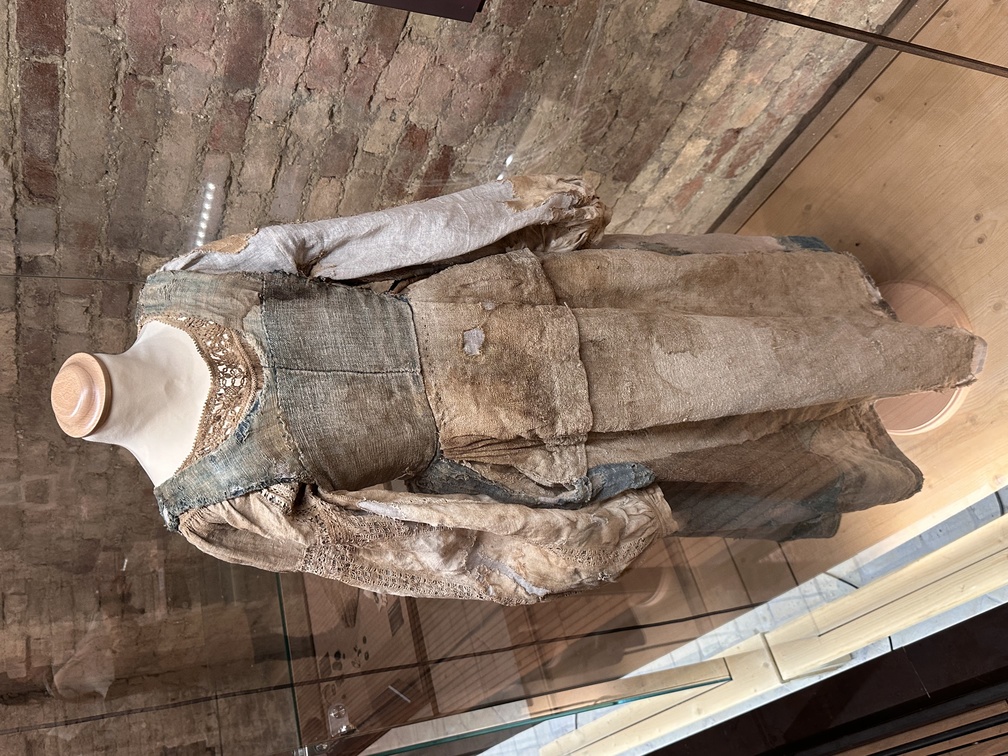
Itinerary in the Piceno: Museum of Mummies, Monsampolo del Tronto
In a bust of a dress of a woman of the people were recovered fragments of whale bone splints, not found in that period in the Marche – a very important discovery that highlighted activities and trade completely ignored previously.
Another little treasure of the Piceno to discover!
The Crypt Museum – the Mummies of Monsampolo is open on Sundays from 4pm to 7pm.
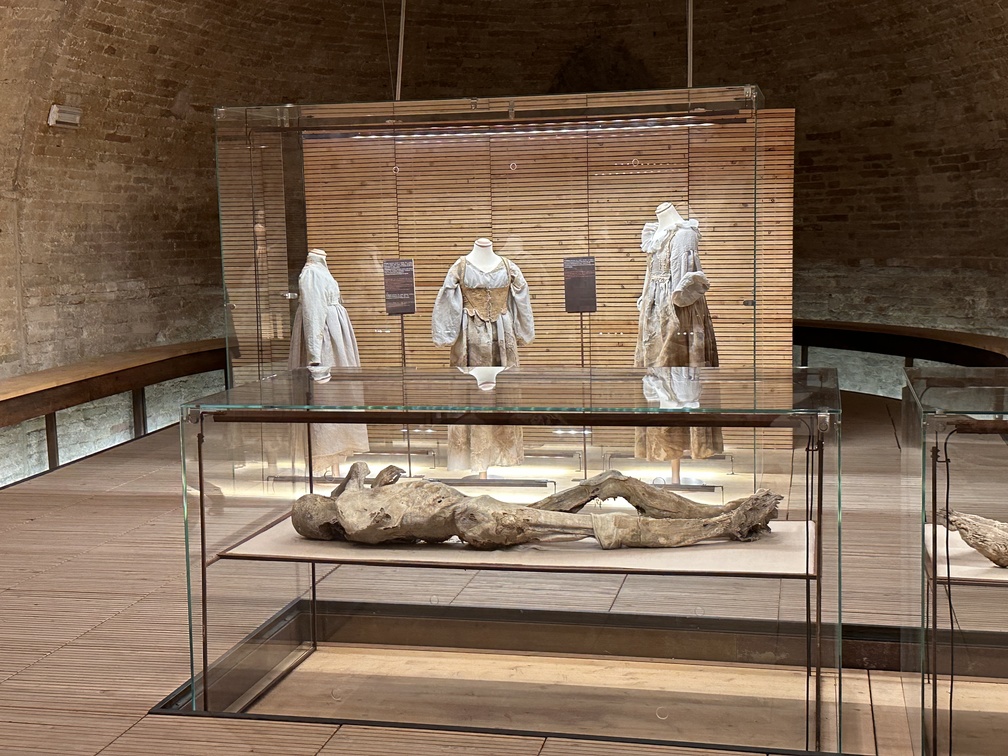
Itinerary in the Piceno: Museum of Mummies, Monsampolo del Tronto
The Medieval Fortress of Acquaviva Picena was built in the fourteenth century by Baccio Pontelli, commissioned by the Acquaviva d’Atri, as a fortified fortress to defend against sieges.
The fortress, which can be visited inside, has a slightly irregular quadrilateral plan with a large central parade ground, military walkways on the sides, the three corner towers and the beautiful high keep from whose top you can enjoy a spectacular view of the Piceno territory.
In summer the fortress comes alive with parades in medieval clothes, events and shows thanks to Sponsalia, the historical re-enactment of the wedding between Rinaldo di Brunforte and Forasteria di Acquaviva.
For further information and opening times you can look the official website of the Fortress up, here.
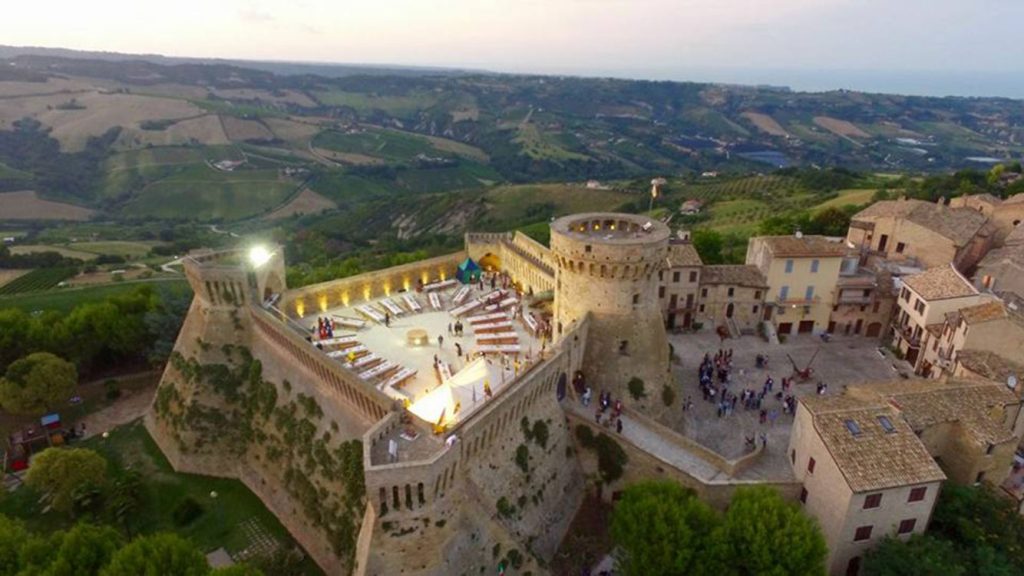
Itinerary in the Piceno: Fortress of Acquaviva Picena – Credits www.acquavivapicena.com
A special mention deserves some of the restaurants that I personally tested during my itinerary in the Piceno and that I feel strongly to recommend for a gastronomic experience in line with the excellence of the territory.
Locanda Centimetro Zero, Spinetoli – An unusual restaurant, a model of social inn where the catering business is the arrival point of a much wider project involving disability, self-production and creative recovery.
A place literally built, managed and run, from furniture to kitchen, by special kids, with physical and mental disabilities.
A place to grow, interact and improve all together, tasting the excellence of Piceno.
“A dinner at Zero Centimetre is more than a dinner: it is eating well, it is eating healthy, it is supporting the territory,
it is participating in a social project, it is doing it in a lively and varied place.
Because a different dinner is a special dinner.”
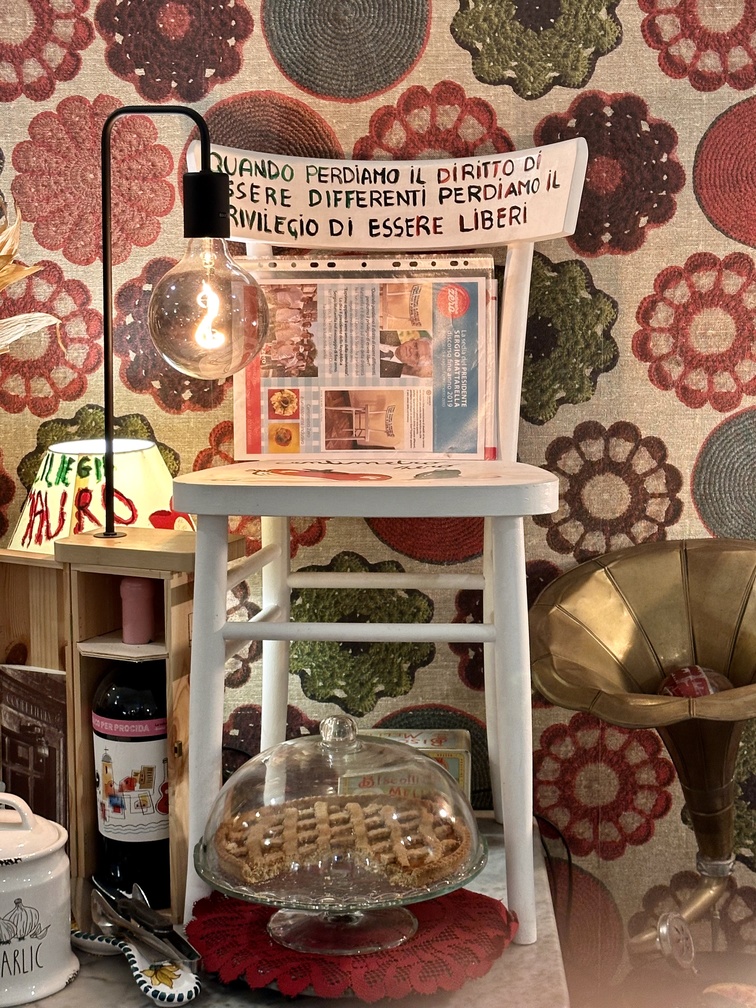
Itinerary in the Piceno: restaurants to try
Agriturismo il Gigante, Appignano del Tronto – A real gastronomic experience made in Marche!
Everything from appetizers to desserts tells of Piceno, its typical products, the passion for cooking.
Olive Ascolane, cremini, salami, cheese, tagliatelle, ravioli, special sauces, the best meat, side dishes, and much more.
Welcome and hearty dishes complete the experience.
Il Cacciatore (da Segà), Ascoli Piceno – Genuine and generous cuisine. Also here the typical dishes of Piceno, are offered, simple and welcoming atmosphere.
Do not miss the appetizers, maccheroncini di Campofilone and tagliatelle with porcini.
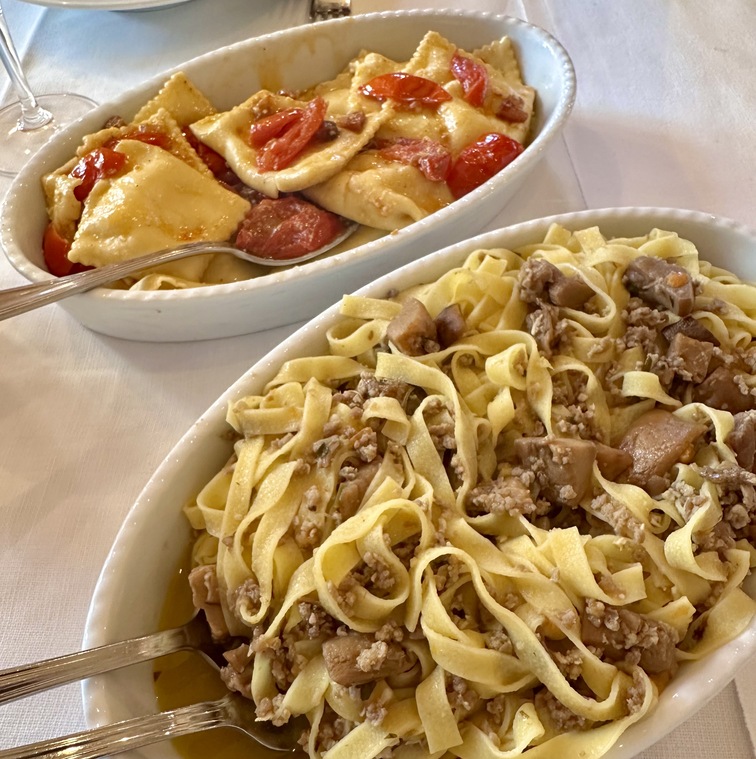
Itinerary in the Piceno: restaurants to try
Agriturismo alla Solagna is a story strongly connected to its territory, a family story, passion, love, study, commitment and determination.
It is the story of Felice and Giuliana Vallorani who together with their daughter Elisa and her husband Enrico – the company’s beating hearts – give life to a unique place, with high scenic impact (try to believe) in one of the most evocative areas of the Piceno and experiential, a farm and a farmhouse that today represent a true excellence of the territory.
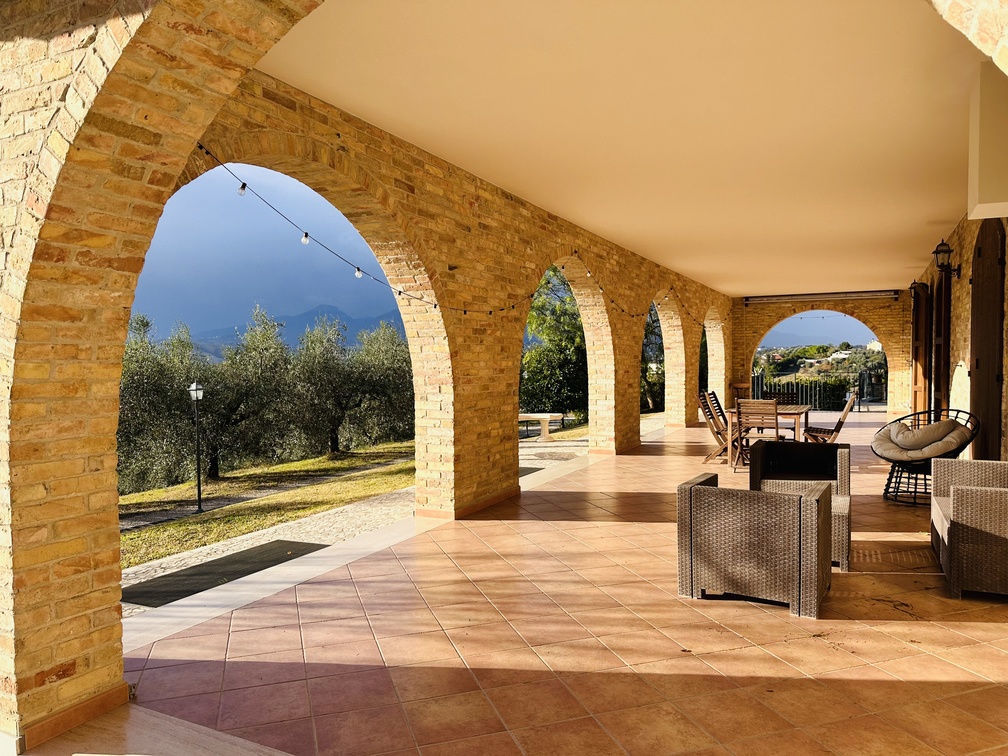
Itinerary in the Piceno, where to sleep: the welcome, the flavors and the genuineness of Agriturismo alla Solagna, Colli del Tronto
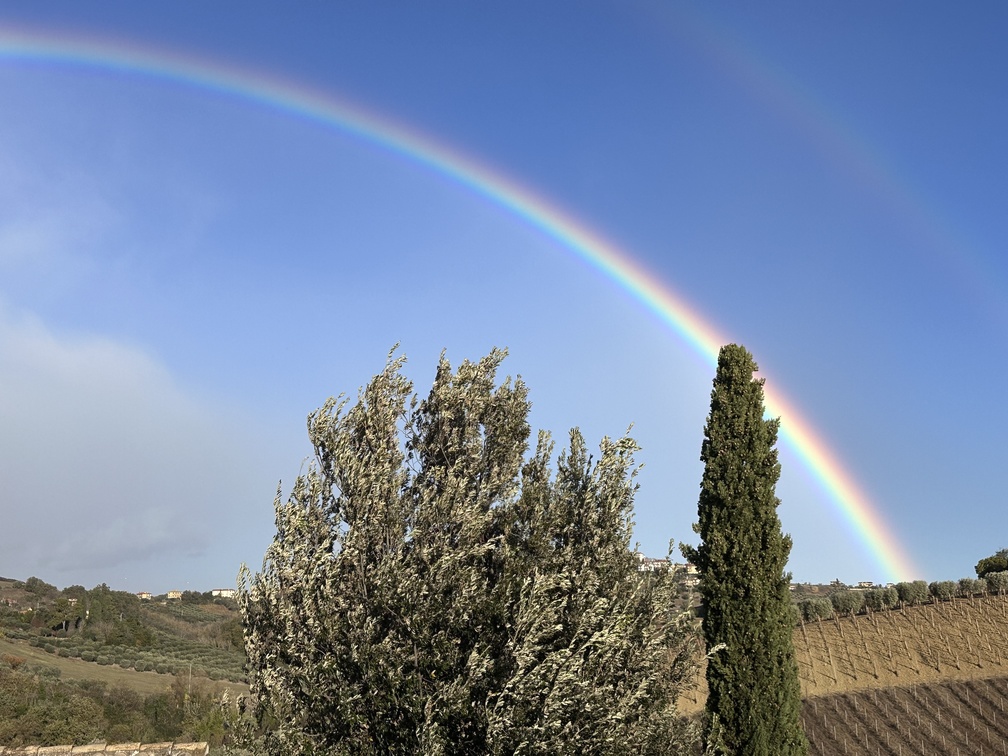
Itinerary in the Piceno, where to sleep: the welcome, the flavors and the genuineness of Agriturismo alla Solagna, Colli del Tronto
Here you can live in close contact with nature, stay in comfortable rooms, equipped with every comfort, taste traditional dishes created with mastery skill, following the seasonality, with the best local products.
And then, organize events and make special tastings – unforgettable my “cooking class” for the preparation of Olive Ascolane – and buy delicious oils and jams to take home with you, or give to relatives and friends.
Among the many pluses, the perfect location: staying here you will be able to better organize your days in the Piceno.
For information and reservations, I invite you to look the official website of Agriturismo alla Solagna up.
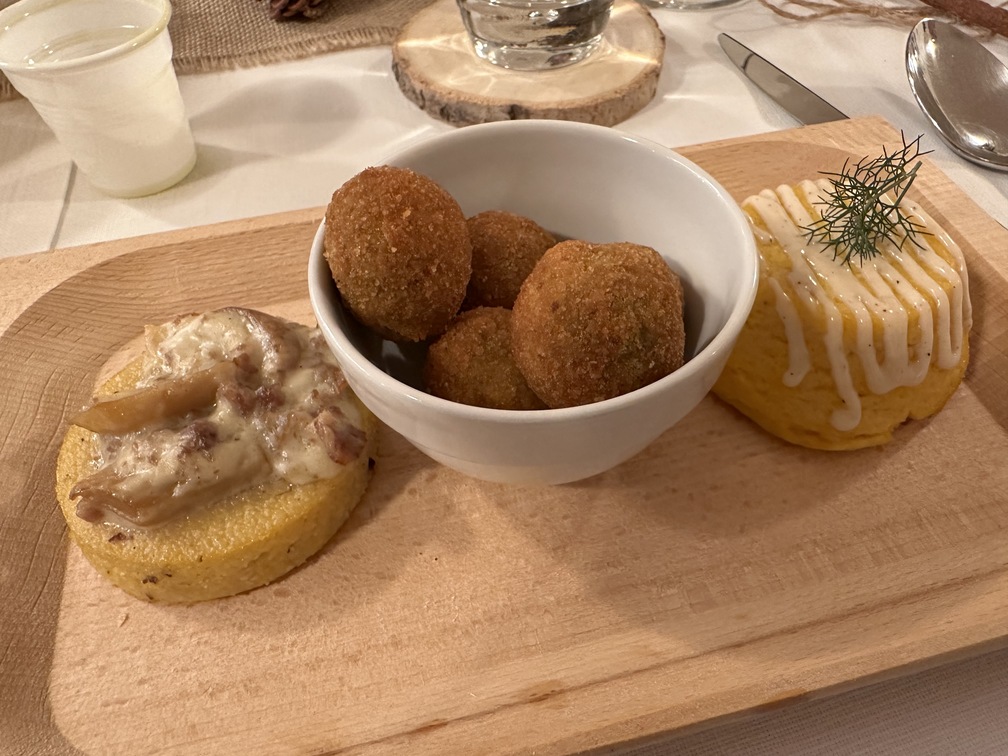
Itinerary in the Piceno, where to sleep: the welcome, the flavors and the genuineness of Agriturismo alla Solagna, Colli del Tronto
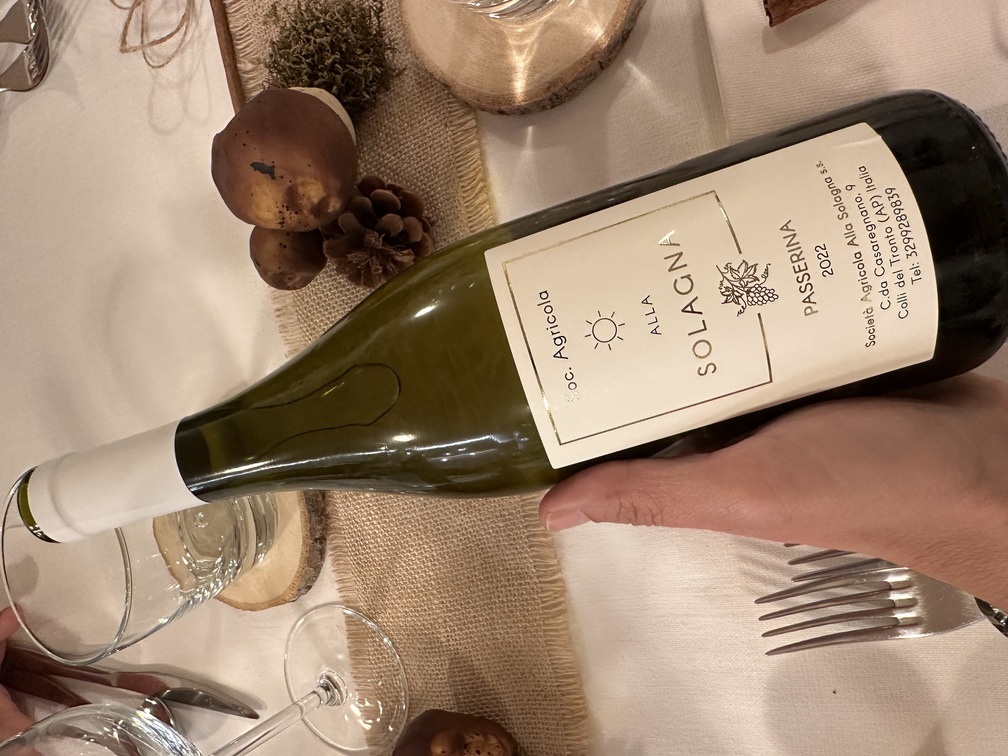
Itinerary in the Piceno, where to sleep: the welcome, the flavors and the genuineness of Agriturismo alla Solagna, Colli del Tronto
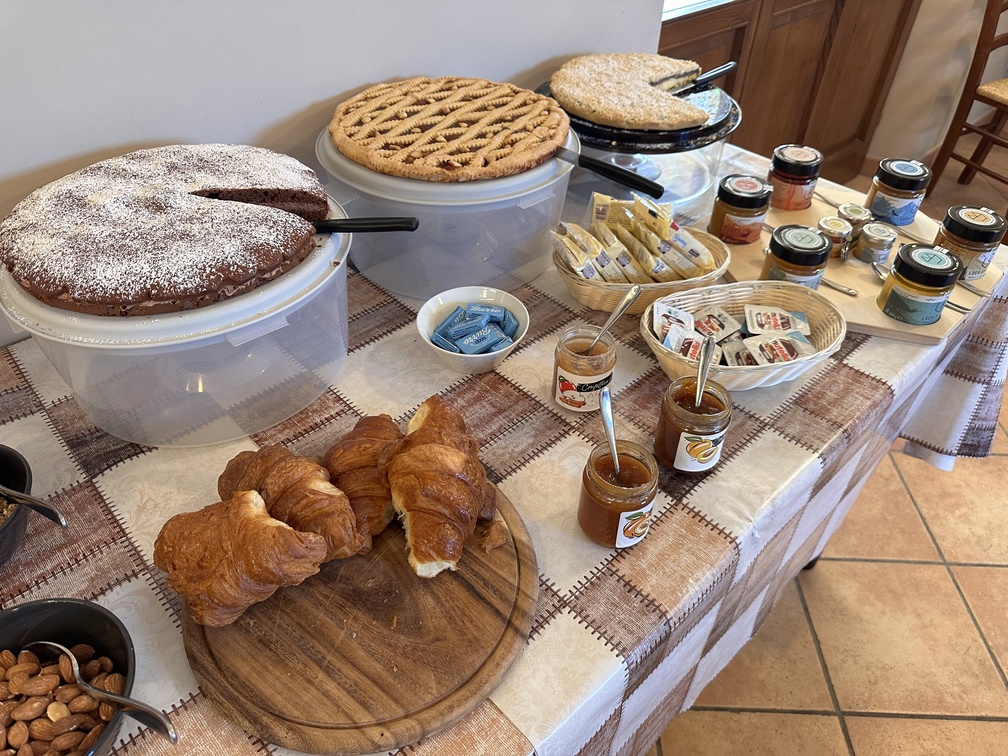
Itinerary in the Piceno, where to sleep: the welcome, the flavors and the genuineness of Agriturismo alla Solagna, Colli del Tronto
For a more in-depth look on the Marche I invite you, as always, to look two of the best websites up, telling daily and with great passion the Marche region with focus and cultural traditional, naturalistic and of course food and wine insights.
Racconti di Marche – edited by Nadia Stacchiotti, blogger specialist on the destination and author of “Altri Racconti di Marche“, a precious guidebook to discover the Marche in a more thorough and unusual way, and I Racconti dello stomaco – edited by Luca Tombesi, blogger promoter of Marche, expert in marketing and food and wine.
Itinerary realized, lived and told for the project #OleandonelPiceno 2023 in collaboration with Copagri Marche, rural development agency that assists and supports training and growth of agricultural enterprises in the Marche region, and with the contribution of the Chamber of Commerce of the Marche.